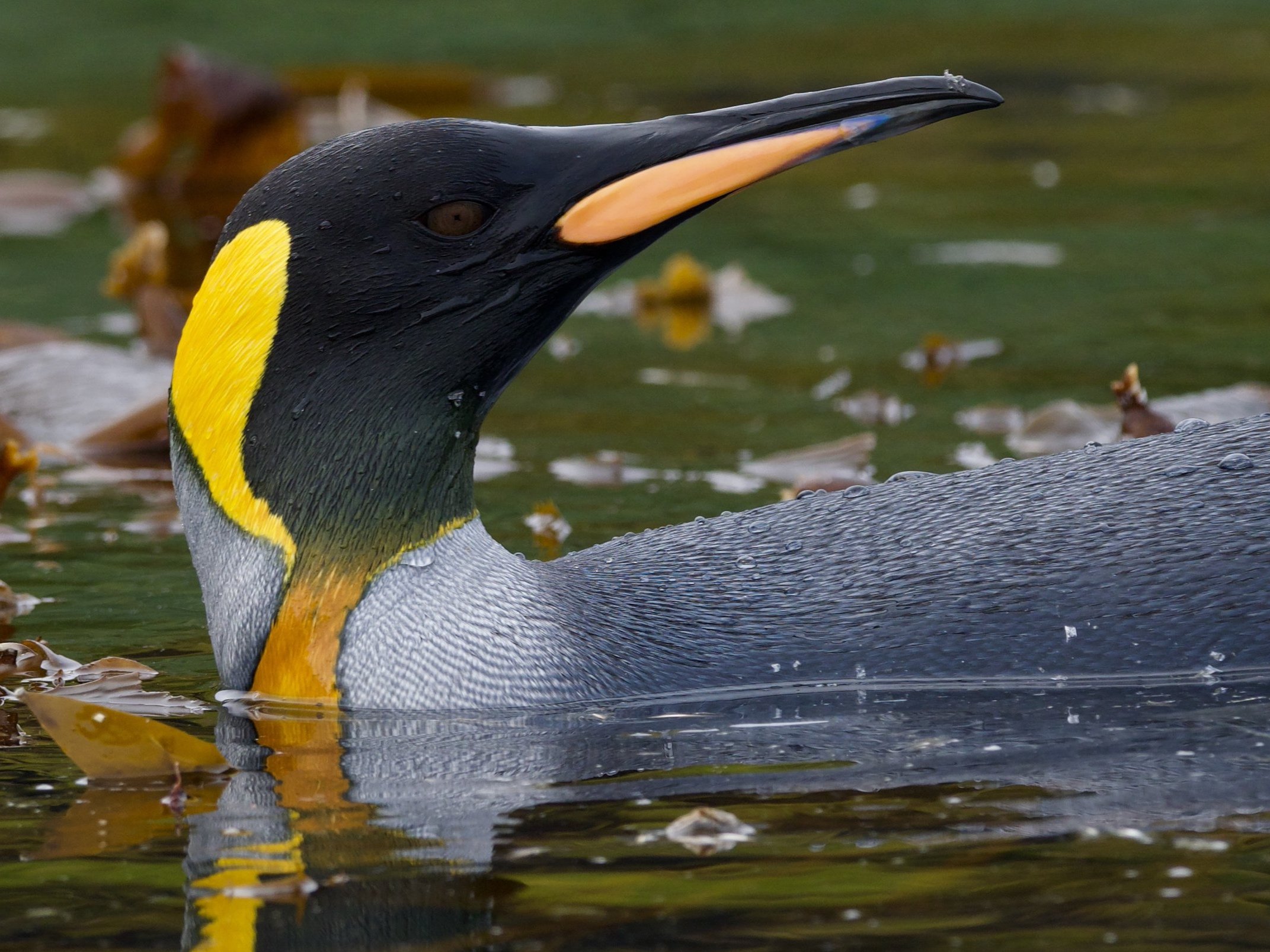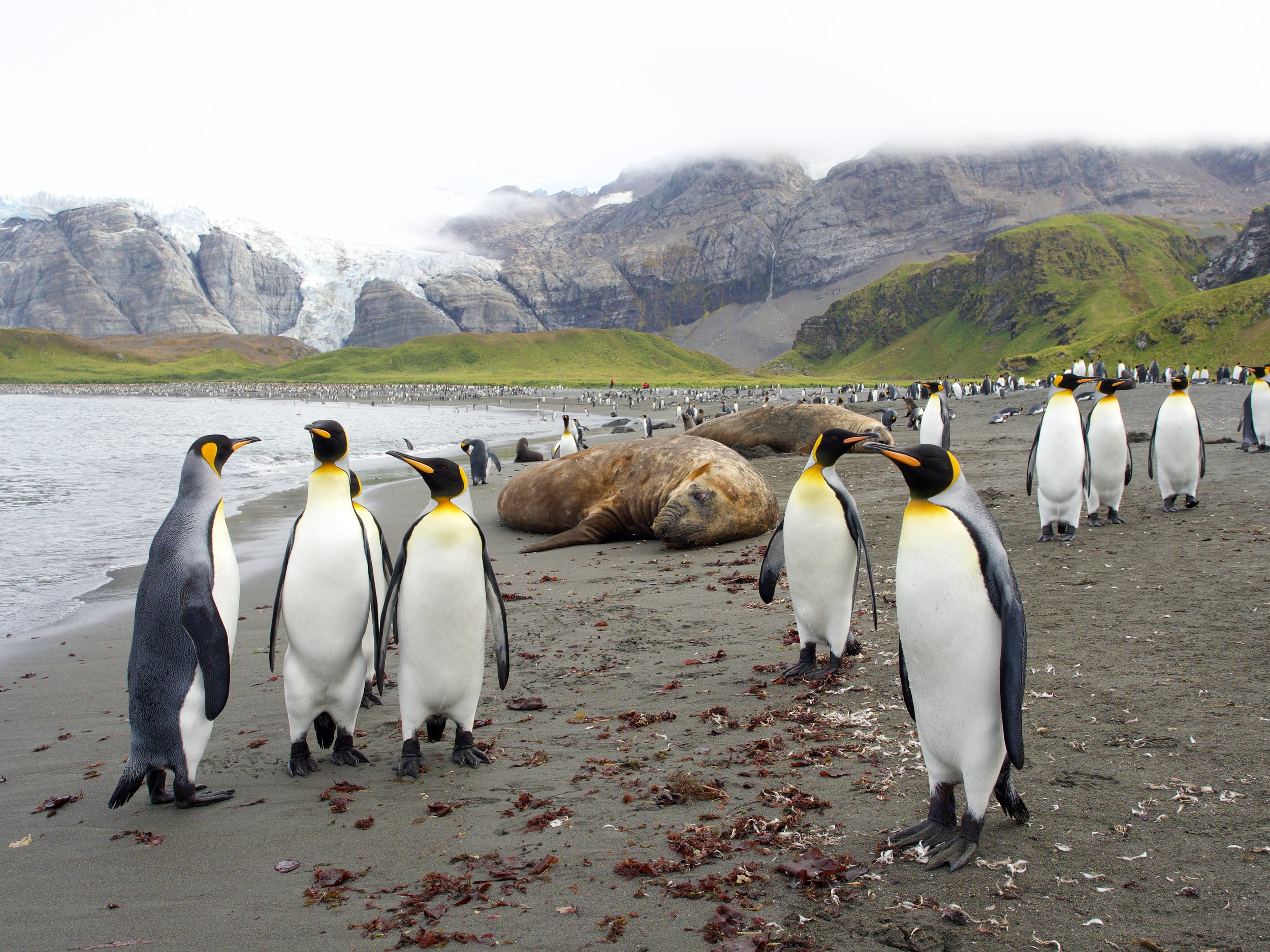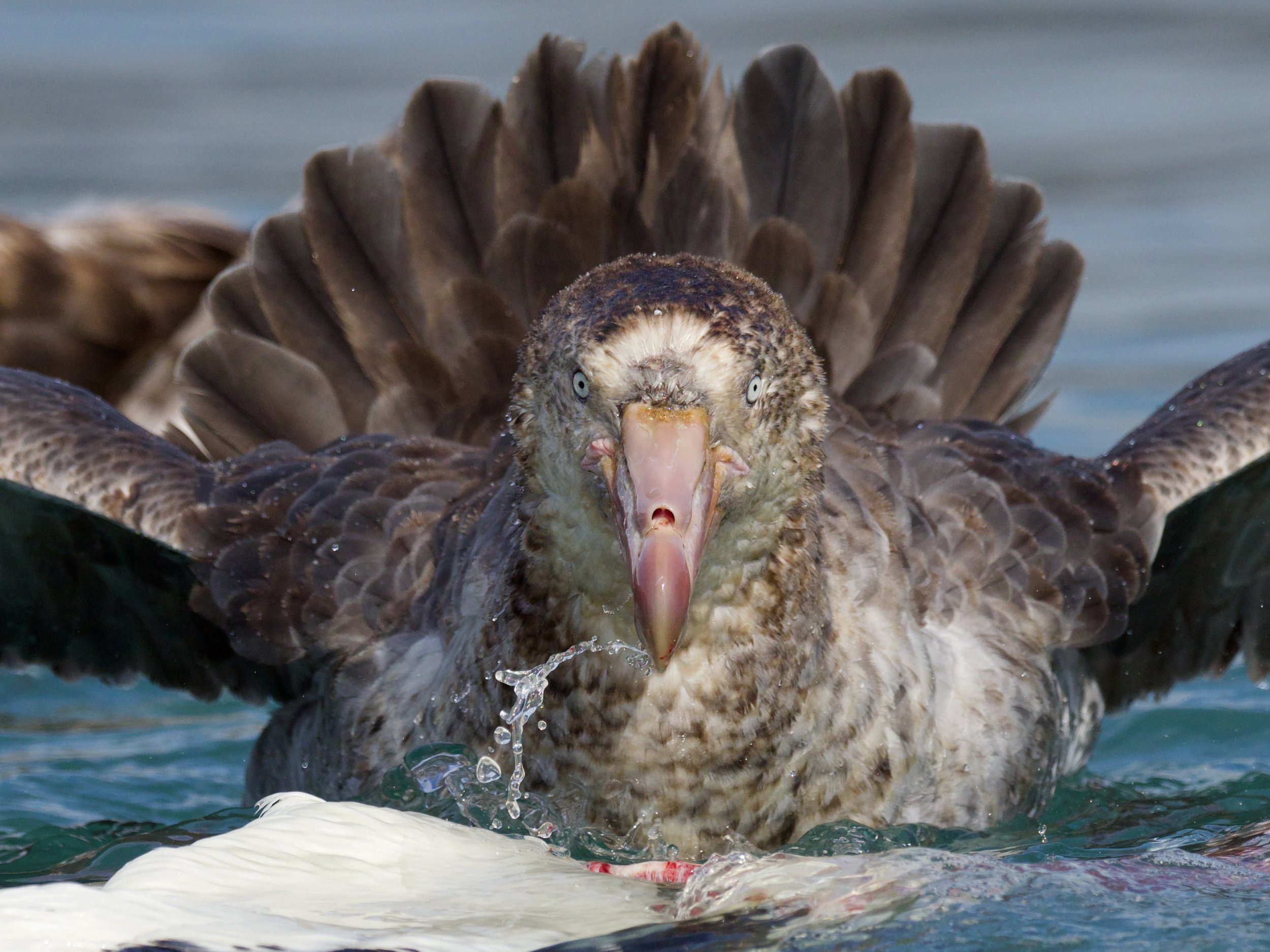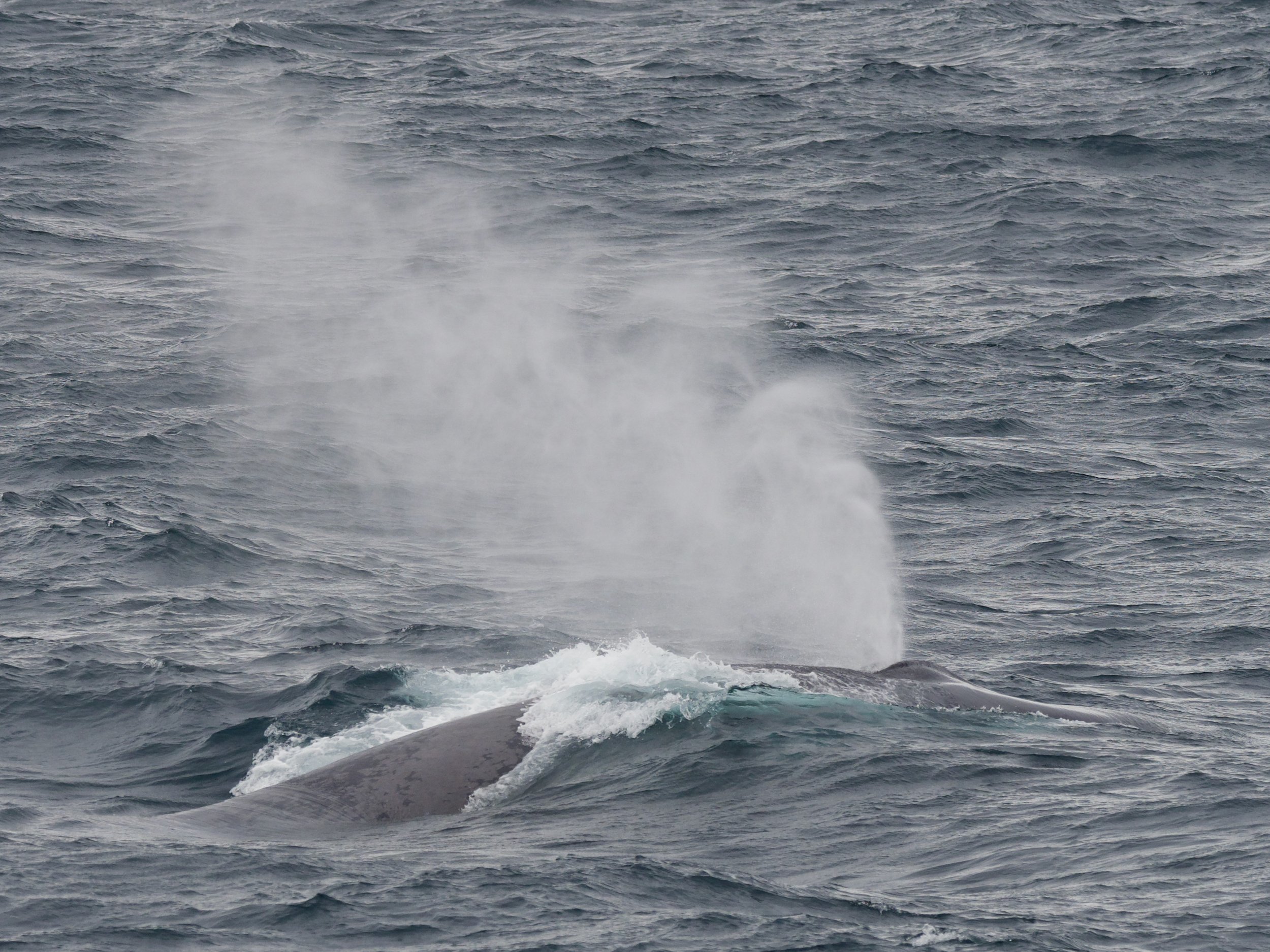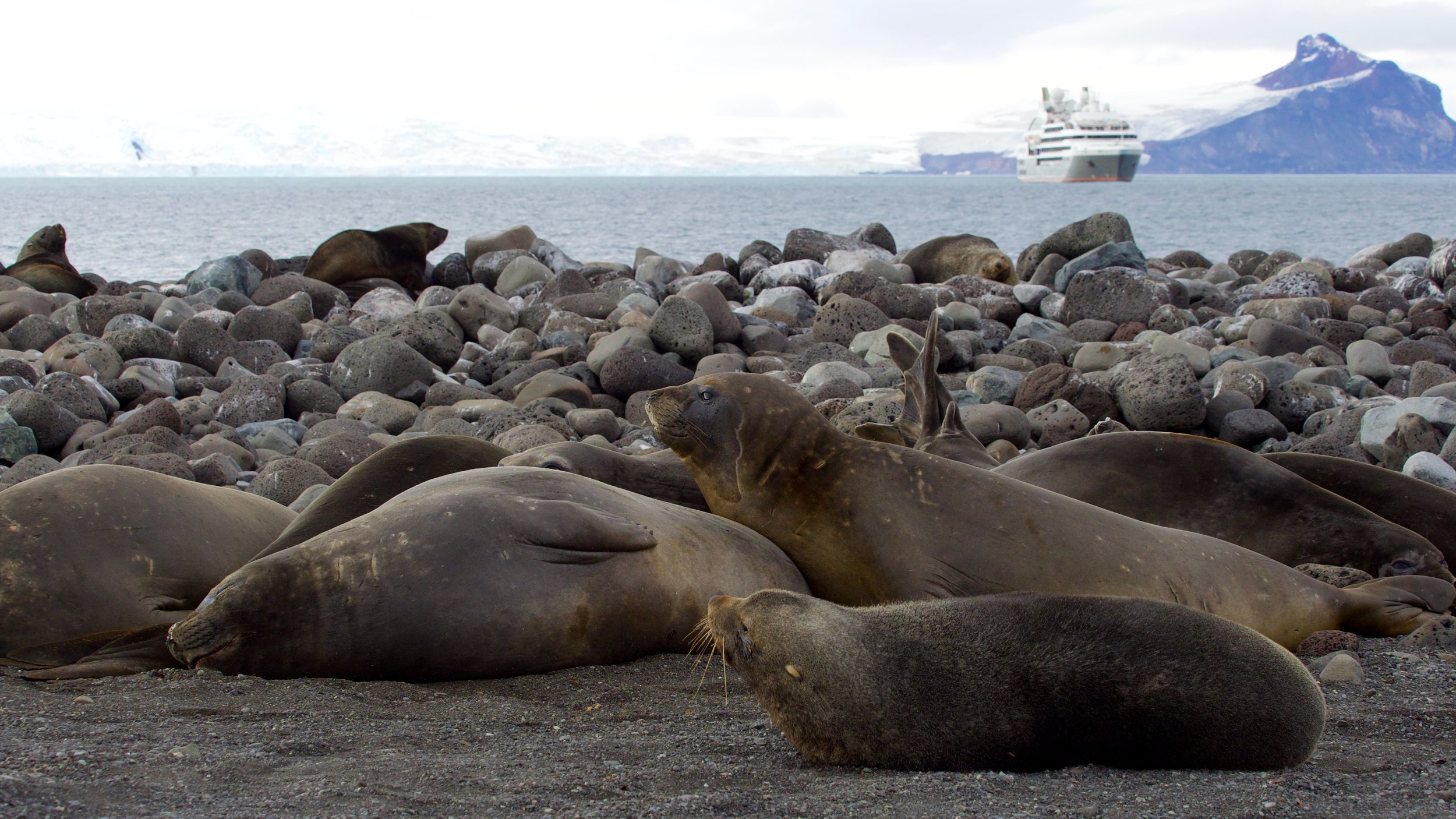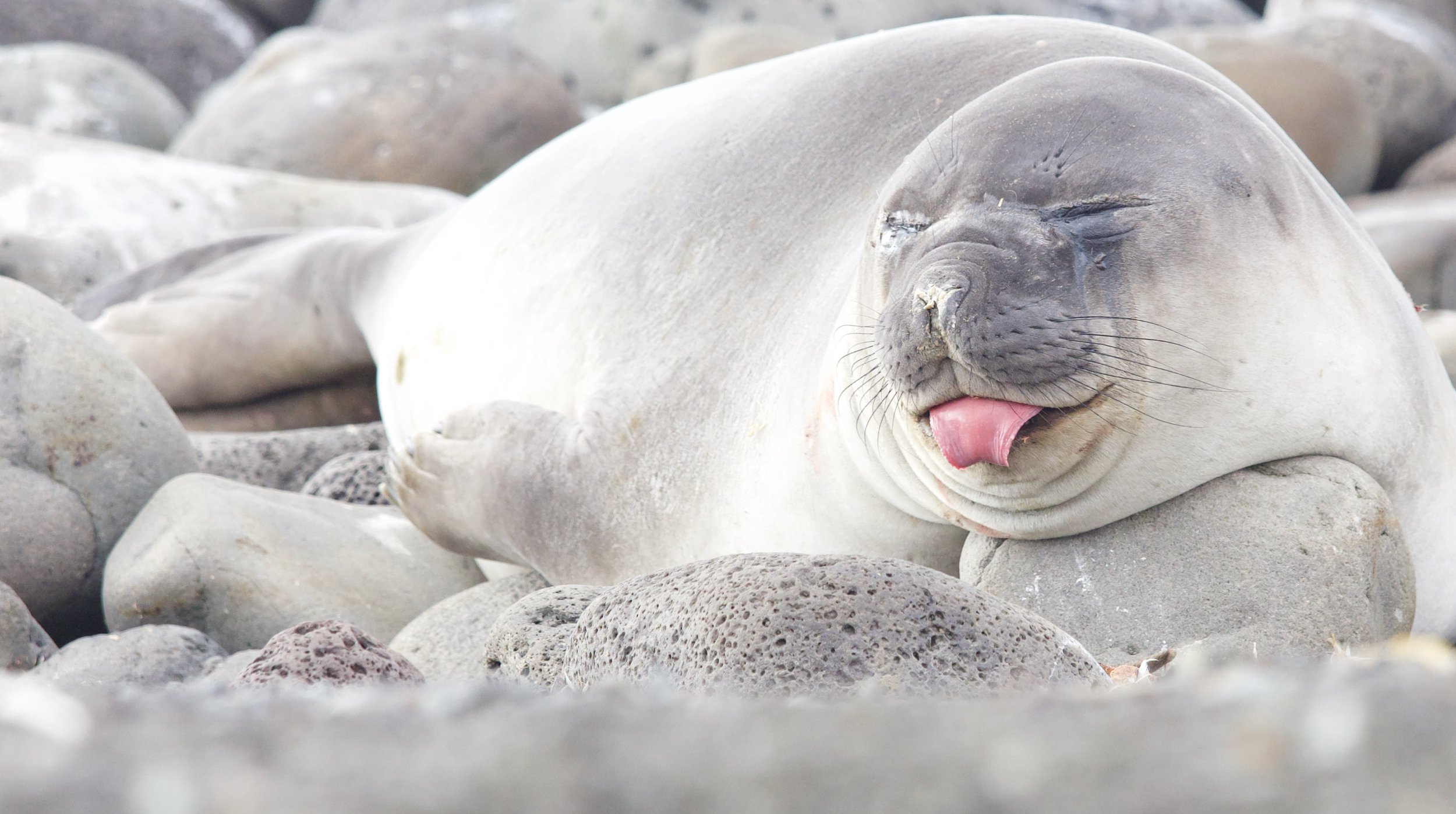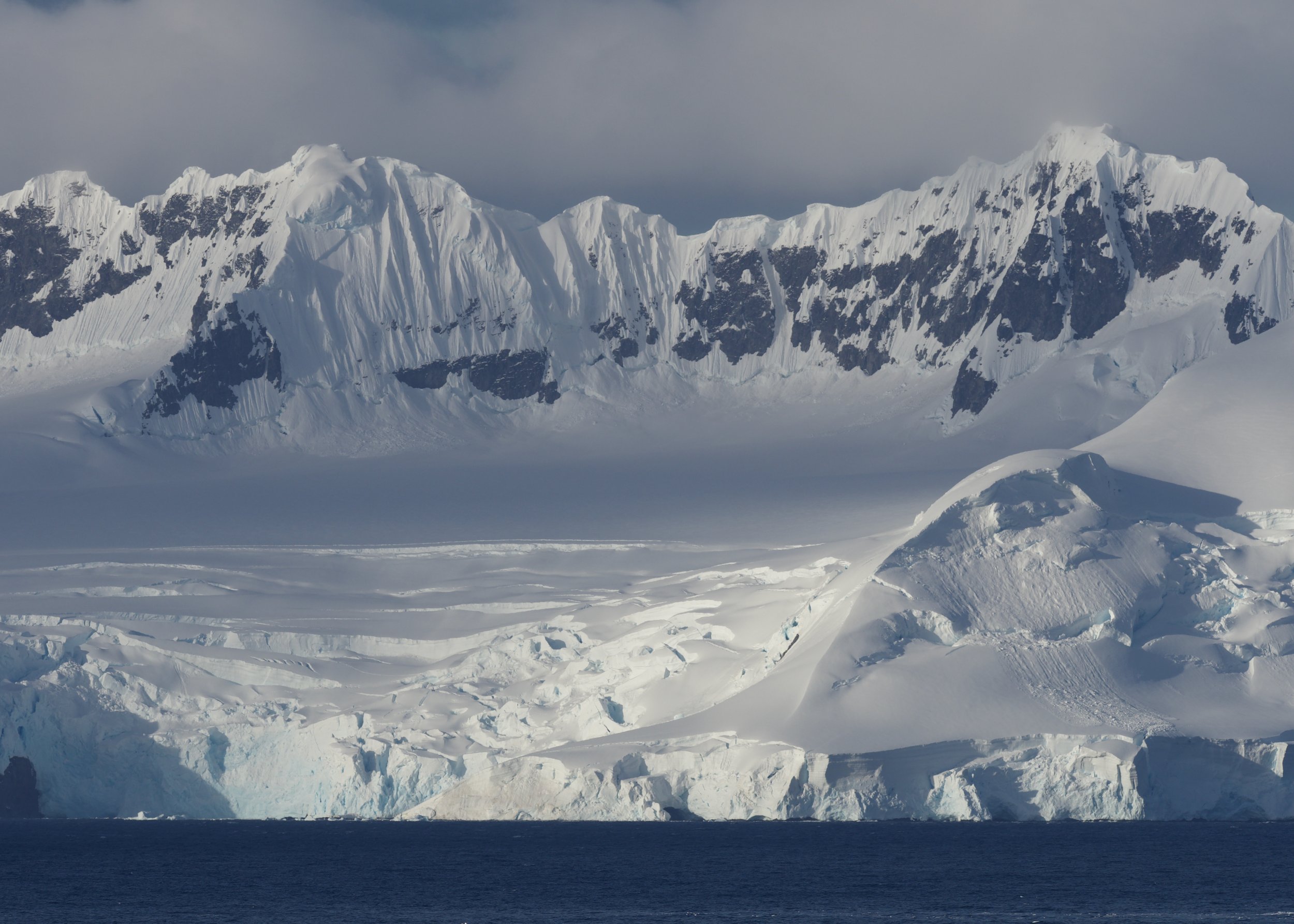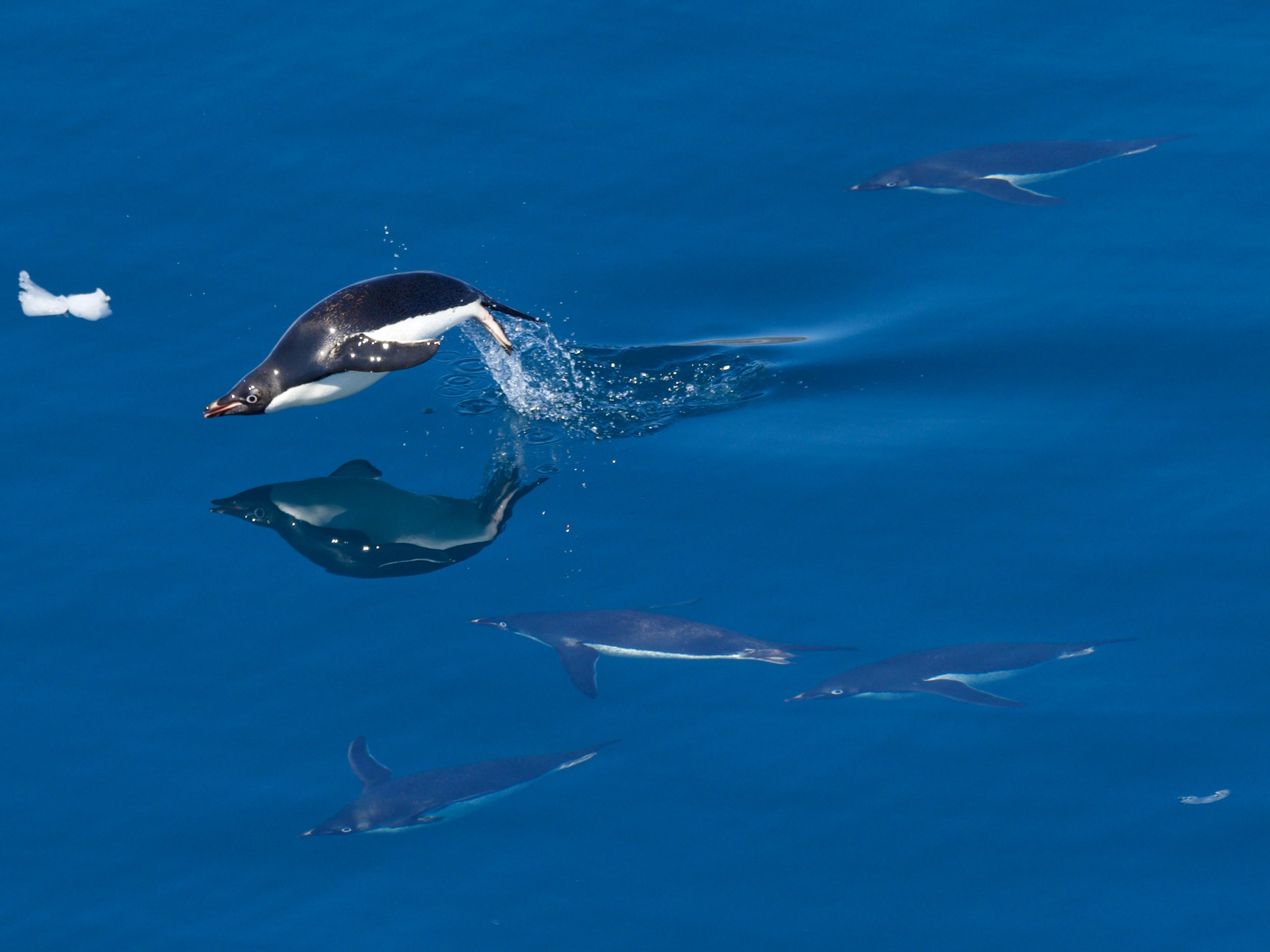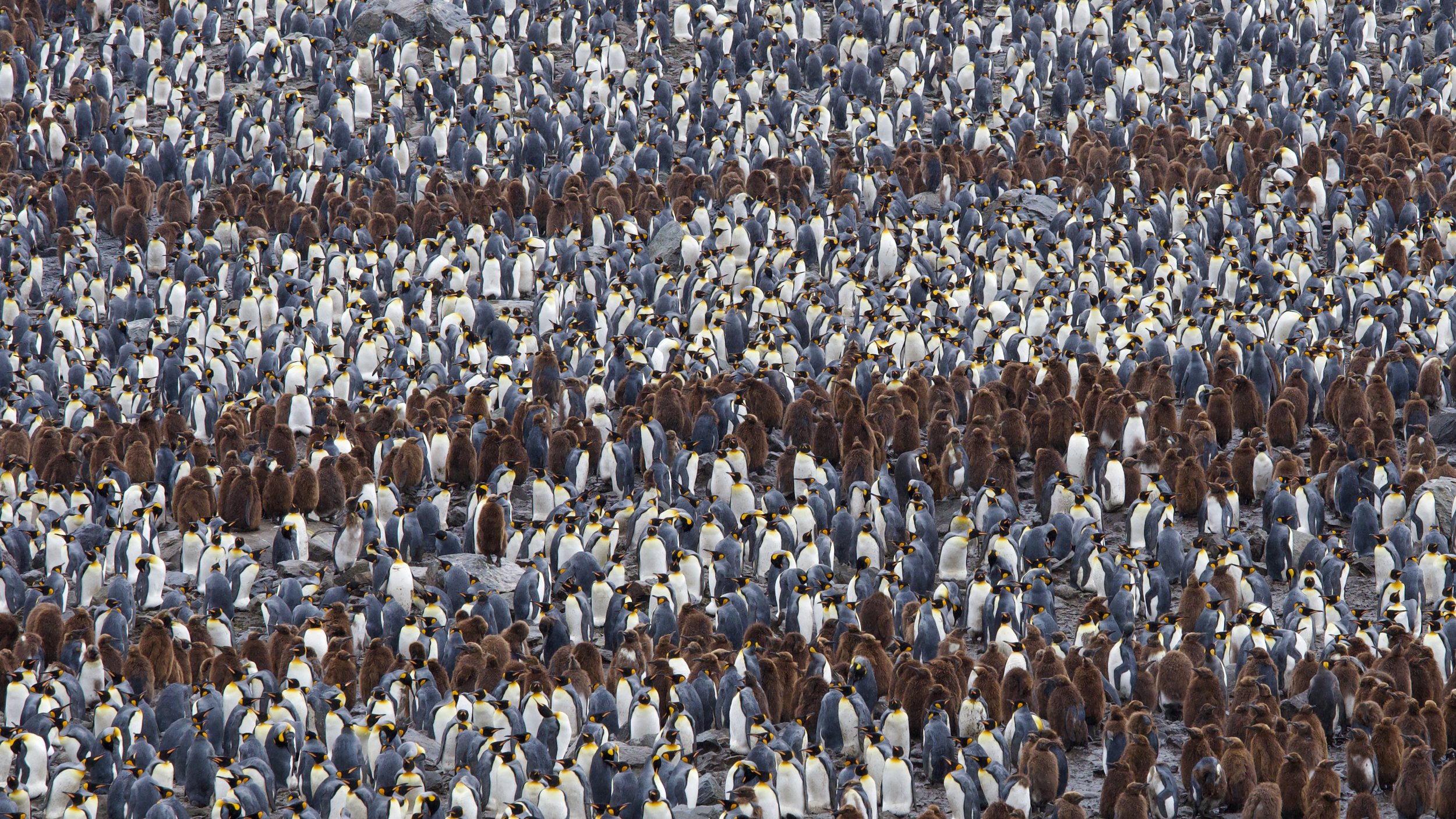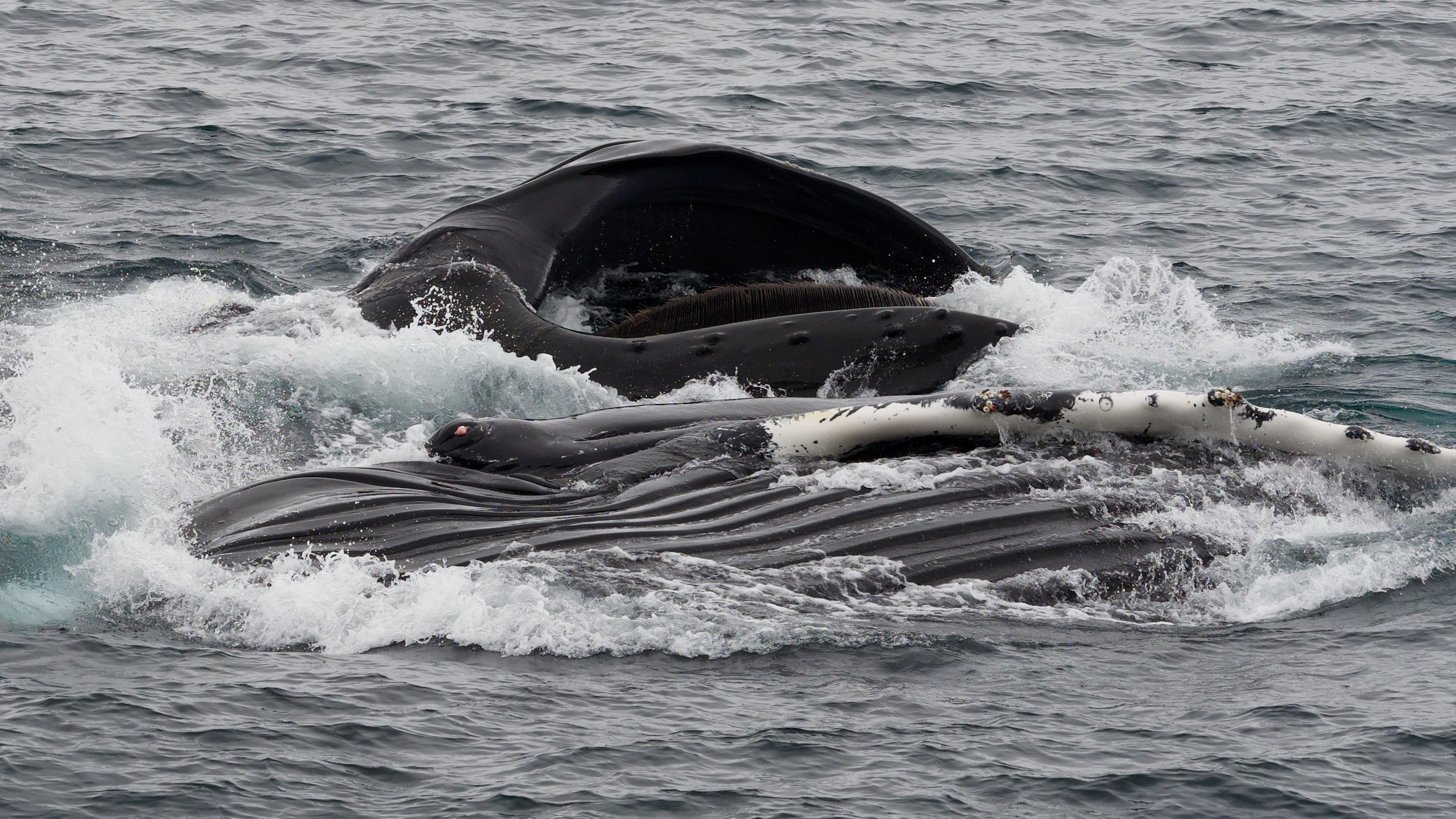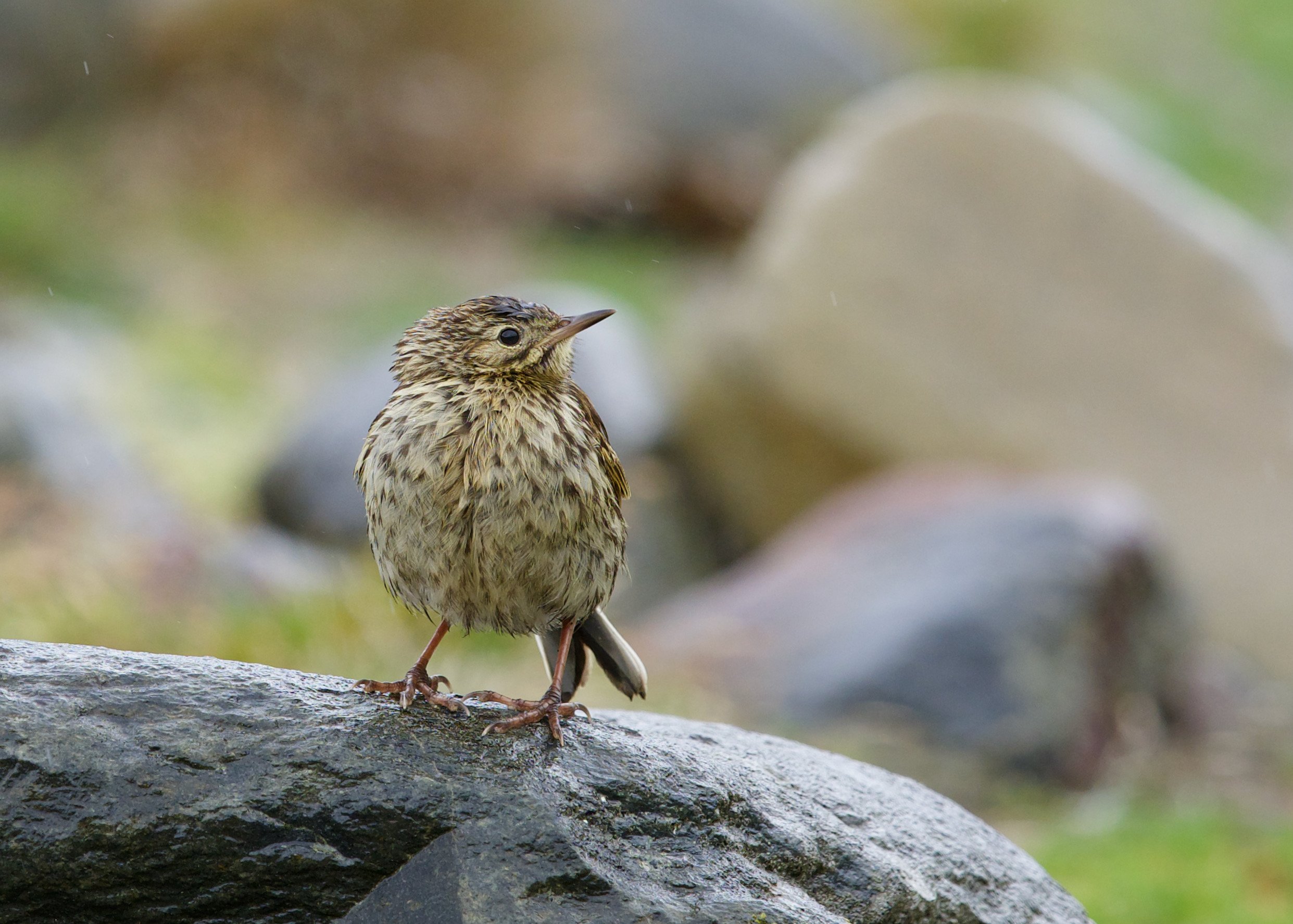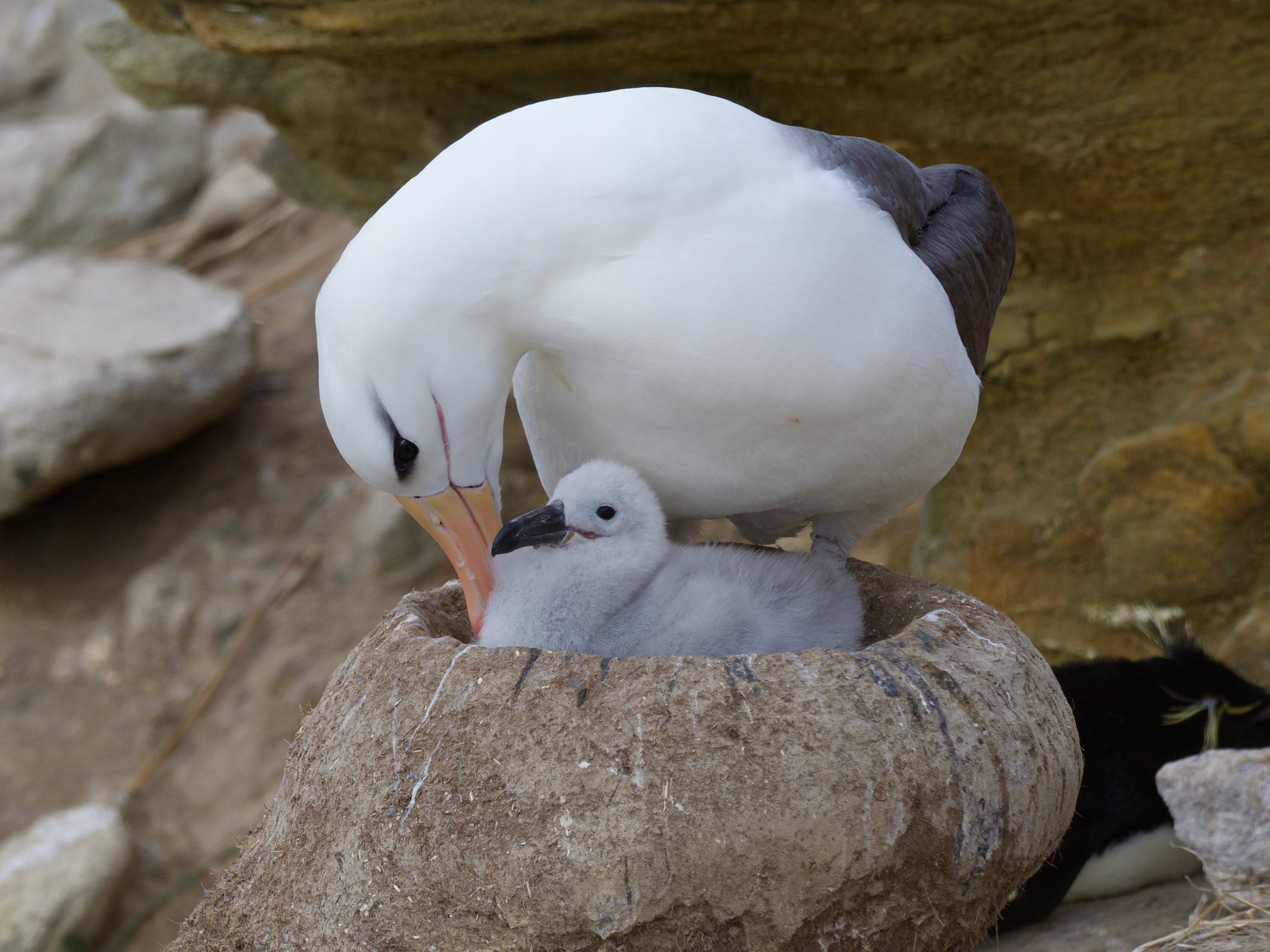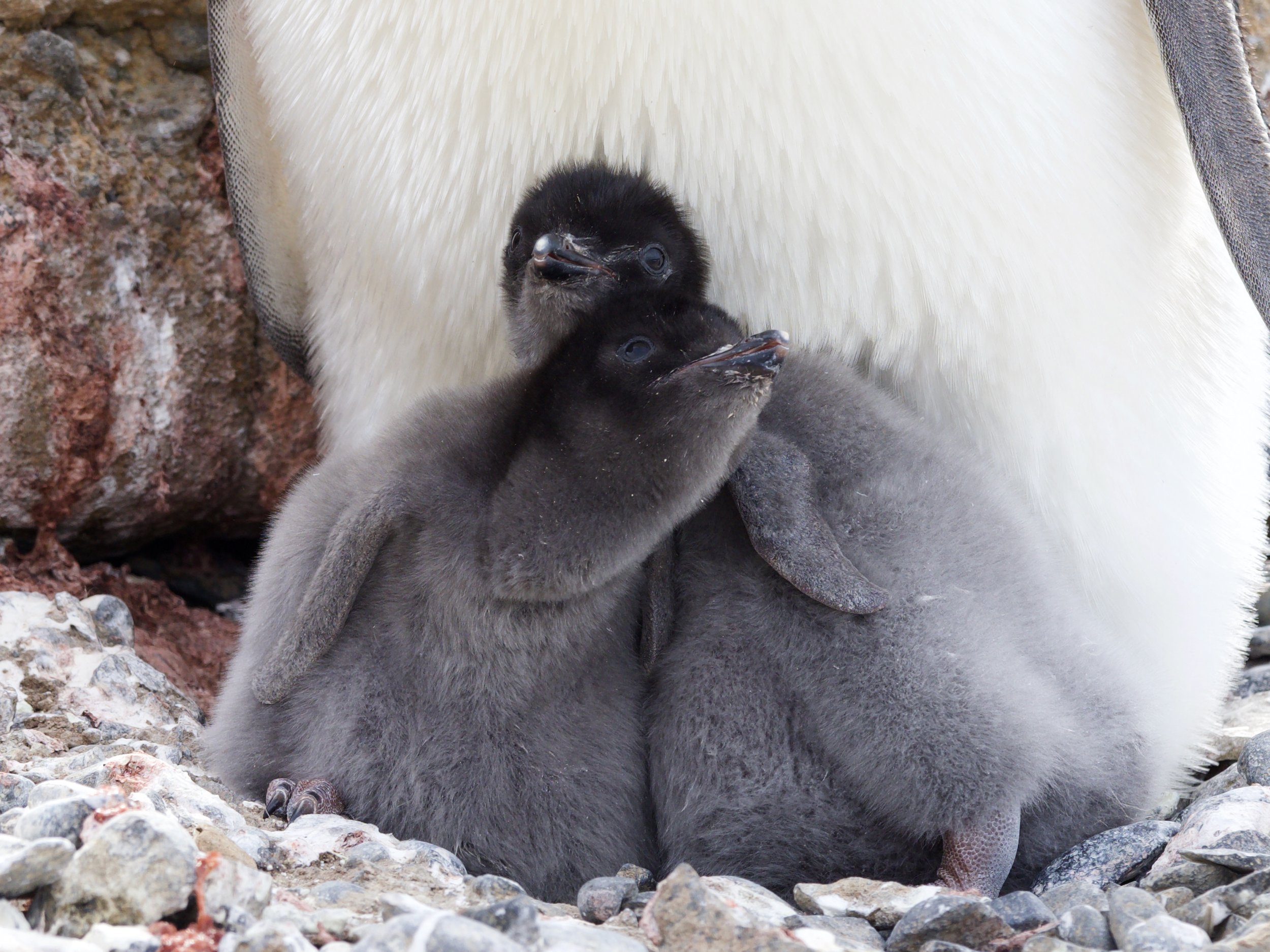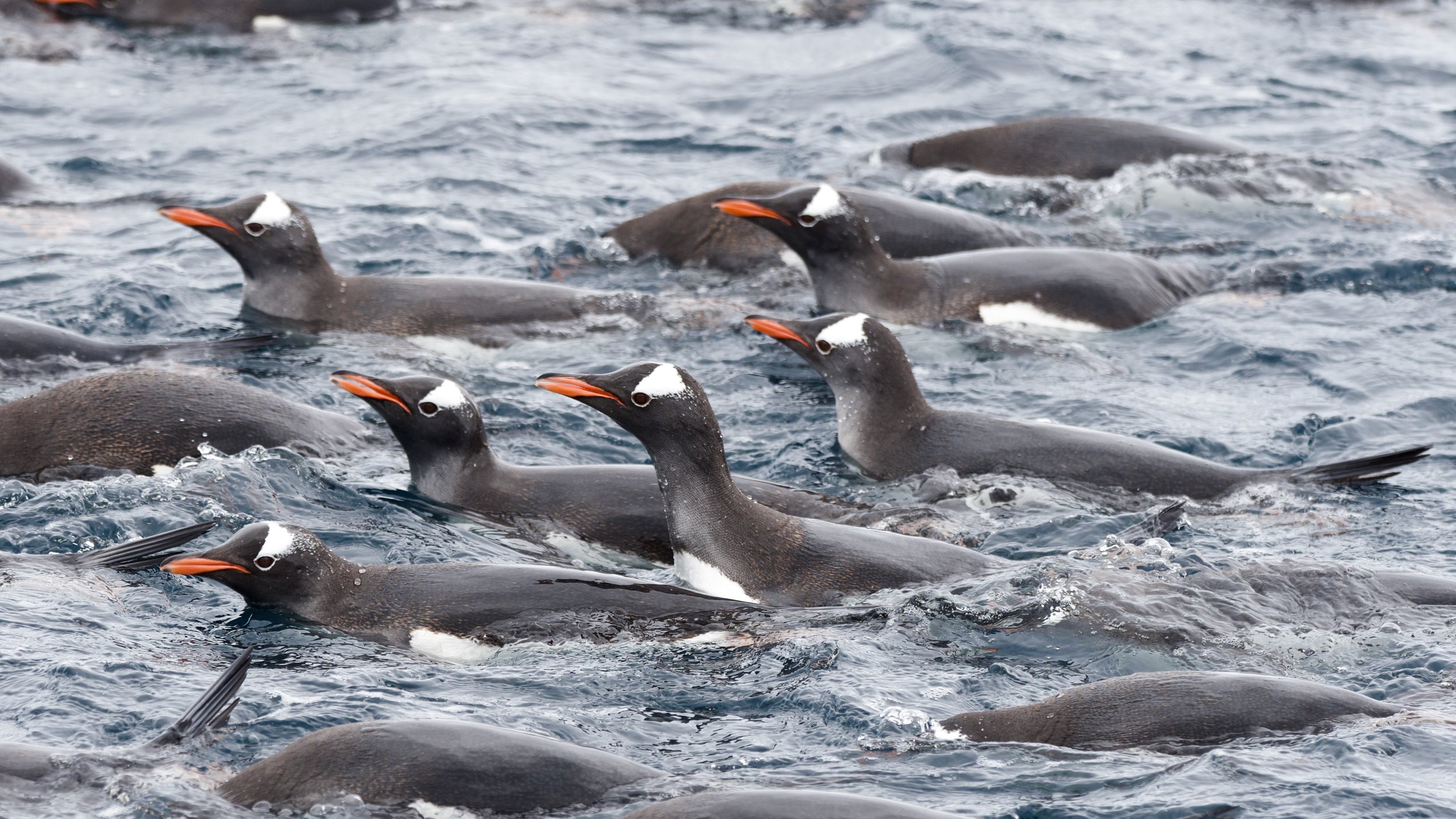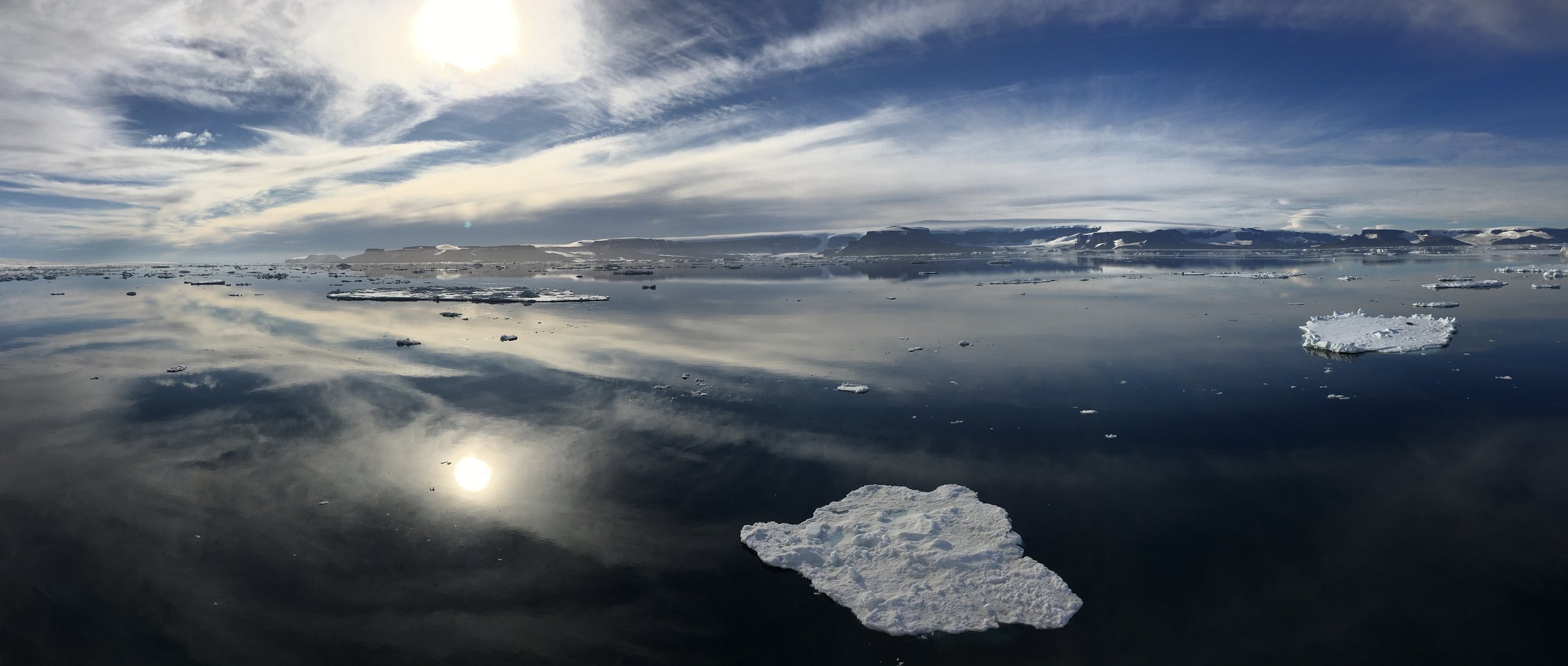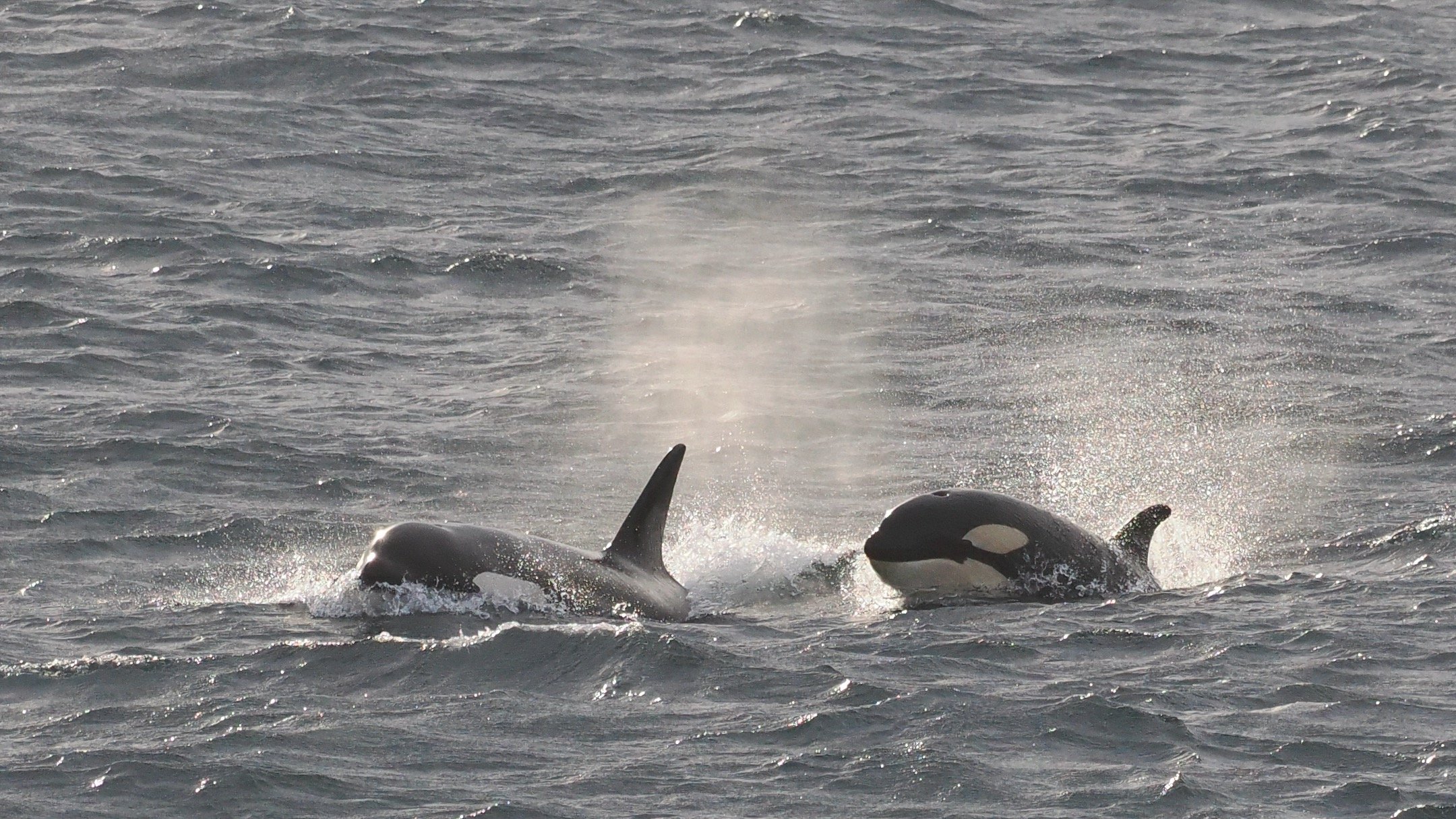
Small-ship Expeditions
Overview
Join Dan and Rachael this coming season on one of seven exciting voyages exploring the Antarctic Peninsula, South Georgia and Falklands and the Subantarctic Islands of New Zealand and Australia.
The itineraries are outlined below. Dan will be expedition leader for some voyages (highlighted) and both Dan and Rachael will be expert guides and naturalists on the remainder and you will benefit from travelling on a small expedition cruise ship which maximises your time ashore and gives us increased flexibility. For more information please get in touch.
Highlights
Choose from a variety of voyages exploring both Australia/New Zealand sub-Antarctic islands and Falklands and South Georgia and south to the Antarctic Peninsula
Travel with expert guides and naturalists Rachael & Dan through these truly remarkable areas
Voyage on a small expedition ship to get the most out of these fabulous regions
Antarctic highlights include: Gentoo and Chinstrap Penguins, Humpback and Type B Killer Whales, Leopard and Crab-eater Seals, dramatic scenery, rich history and great fun.
Subantarctic highlights include: vast colonies of King Penguins, Elephant Seals, Gentoo, Magellanic, Royal and Rockhopper Penguins, hundreds of Albatross, inquisitive Caracara’s, dramatic peaks and sandy bays
Historic monuments from the heroic age of polar exploration such as Shackleton’s grave
An incredible programme of onboard lectures from a great team of experts.
Glaciers and ice-capped mountains of Antarctica
Voyage Summaries
-
Places visited: New Zealand sub-Antarctic islands: Snares, Auckland, Campbell. Australian sub-Antarctic Macquarie Island.
12 days, Pricing starts from $7,675 USD per person
Max. 140 passengers
Day 1: Queenstown, New Zealand
Guests should make their way to the designated hotel where we will spend the first night of the expedition. This evening there will be an informal get-together at the hotel for dinner; an excellent opportunity to meet fellow adventurers on your voyage and some of our expedition team.
Day 2: Port of Bluff
Today we enjoy breakfast in the hotel restaurant and have the morning free to explore Queenstown before returning to the hotel for lunch and departing for the Port of Bluff to embark your ship. You will have time to settle into your cabin and familarise yourself with the ship; we will also take the opportunity to conduct a number of safety briefings. You are invited to join the expedition team in the Observation Lounge and up on the Observation Deck as we set our course to The Snares and our adventure begins.
Day 3: The Snares - North East Island
The closest Subantarctic Islands to New Zealand, they were appropriately called The Snares as they were once considered a hazard for sailing ships. Comprising of two main islands and a group of five islands called the Western Chain; they are uninhabited and enjoy the highest protection as Nature Reserves. It is claimed by some that these islands are home to more nesting seabirds than all of the British Isles together. We plan to arrive in the morning, and as landings are not permitted, we will Zodiac cruise along the sheltered eastern side of the main island if the weather and sea conditions are suitable. In the sheltered bays, we should see the endemic Snares Crested Penguin, Snares Island Tomtit and Fernbirds. There are hundreds of thousands of Sooty Shearwaters nesting on The Snares; the actual number is much debated. Buller’s Albatross breed here from early January onwards. There will be opportunities to view the forests of large tree daisy Olearia lyallii which forms a canopy over much of the island group.
Day 4: Auckland Islands - Enderby Island
The Auckland Islands group was formed by two volcanoes which erupted some 10-25 million years ago. They have subsequently been eroded and dissected by glaciation creating the archipelago as we know it today. Enderby Island is one of the most beautiful islands in this group and is named after the same distinguished shipping family as one of our own vessels. This northern most island in the archipelago is an outstanding wildlife and birding location and is relatively easy to land on and walk around. The island was cleared of all introduced animals (pests) in 1994 and both birds and the vegetation, especially the herbaceous plants, are recovering both in numbers and diversity. Our plan is to land at Sandy Bay, one of three breeding areas in the Auckland Islands for the Hooker’s or New Zealand Sea Lion, a rare member of the seal family. Beachmaster bulls gather on the beach, defending their harems from younger (ambitious) males, to mate with the cows shortly after they have given birth to a single pup. Hooker’s or New Zealand Sea Lion numbers are in a slow decline, for reasons which are not obvious but most probably connected with a nearby squid fishery. During our day ashore there will be several options, some longer walks, some shorter walks and time to spend enjoying the wildlife. The walking is relatively easy. A boardwalk traverses the island to the dramatic western cliffs, from there we follow the coast and circumnavigate the island. Birds that we are likely to encounter include the following species: Southern Royal Albatross, Northern Giant Petrel, Auckland Island Shag, Auckland Island Flightless Teal, Auckland Island Banded Dotterel, Auckland Island Tomtit, Bellbird, Pipit, Red-crowned Parakeet, Yellow-eyed Penguin and Light-mantled Sooty Albatross. There is also a very good chance of seeing the Subantarctic Snipe. Other more common species we will see include the Goldfinch, Song Thrush, Blackbird, European Starling, Red-billed Gull and Redpoll. On Derry Castle Reef we will look for migratory waders which could include Bar-tailed Godwit, Turnstone and possibly vagrants.
Day 5: Auckland Islands – Carnley Harbour
In the south of the archipelago there is a very large sheltered harbour rich in human history including shipwrecks, treasure hunters, Coastwatchers and, of course, scientific parties. We plan to arrive mid-morning entering the harbour through the eastern entrance which is guarded on both sides by dramatic cliffs and rugged, tussock-covered hills. Our activities here today are weather dependent. We have a number of options. If the weather is fine there will be an opportunity for the more energetic expeditioners to climb to the South West Cape and visit the Shy Mollymawk colony. This climb provides magnificent views in all directions, especially over the western entrance to Carnley Harbour, Adams Island and Western Harbour. For those not making the climb there will be an opportunity to Zodiac cruise along the coast of Adams Island, Western Harbour and Victoria Passage. Other options include the Tagua Bay Coastwatcher’s hut and lookout which was occupied during the Second World War. We could visit Epigwatt and the remains of the ‘Grafton’ which was wrecked here in 1864. All five men aboard survived and lived here for 18 months before sailing their modified dinghy to New Zealand to get help. Two of the survivors wrote books about their ordeal, their first-hand accounts tell us a lot about their time here. Later this afternoon we depart for Macquarie Island.
Day 6: At Sea
As we make our way through an area known as the Furious Fifties in the tumultuous Southern Ocean, we will learn more about the flora and fauna as we prepare for our arrival at Macquarie Island. En route there are great birding opportunities which may include the Wandering Albatross, Royal Albatross, Black-browed Albatross, Light-mantled Sooty Albatross, Salvin’s Albatross, Grey-headed Albatross, Northern and Southern Giant Petrel, Sooty Shearwater and Little Shearwater. We will endeavour to spot the Fairy Prion, Fulmar Prion and Antarctic Prion – never an easy task – but we should get some great views. Other species to be on the lookout for include the Soft-plumaged Petrel, Mottled Petrel, White-headed Petrel, Grey-faced Petrel, White-chinned Petrel, Grey-backed Storm-Petrel, Wilson’s Storm-Petrel and the Black-bellied Storm-Petrel.
Days 7 to 8: Macquarie Island
Described by one Australian explorer as “One of the wonder spots of the world” this is the only place in the world where the beautiful Royal Penguin breeds. Three other species of penguins, the King, Gentoo and Rockhopper also breed here. You will never forget your first experience of a noisy ‘penguin city’, where the dapper inhabitants show no fear of their strange visitors and where you will be immersed in a tumult of chattering, feeding chicks; territorial disputes; petty pilfering and courtship displays. This all happens amongst the hundreds of Southern Elephant Seals lolling on the beaches and dunes. On arrival we hope to meet with scientists and Park Rangers based here who will accompany us on all our landings.
Day 9: At Sea
There will be briefings and lectures on Campbell Island in preparation for our visit there and opportunities for pelagic birding and/or simply relaxing.
Day 10: Campbell Island – Perseverance Harbour
We have a full day to explore Campbell Island, New Zealand’s southernmost Subantarctic territory. Its history is as rich and varied as the other islands we visit. Discovered in 1810, it was soon occupied by sealers who introduced rats and cats. Farming followed from 1895 to 1934 when it was abandoned. Coastwatchers were stationed on the island during the war and at the end of the war the station was taken over by the New Zealand Metrological service. They maintained a manned weather/ research station there until 1995. In the early 1970s the removal of farm animals commenced and all were eventually removed by 1990. The vegetation recovered quickly and the cats died out naturally. In a very ambitious (and never before attempted on such a large scale) eradication programme the New Zealand Department of Conservation successfully removed the rats. With the island declared predator free, the way was clear to reintroduce the endangered Campbell Island Flightless Teal, which had been rediscovered on an offshore island in 1975. Snipe, which were formerly unknown from the island but were discovered on another offshore island, recolonised the islands themselves. The vegetation which the great English botanist Sir Joseph Hooker described in 1841 as having a “Flora display second to none outside the tropics” is flourishing and is nothing short of spectacular. We will offer a number of options which will enable you to explore the island including an extended walk to Northwest Bay. There will also be an easier walk to the Col Lyall Saddle. All of these options will allow you the opportunity and time to enjoy the Southern Royal Albatross which nest here in large numbers. We also visit areas of the island which contain outstanding examples of the megaherbs for which the island is renowned.
Day 11: At Sea
At sea en route to the Port of Bluff, take the opportunity to relax and reflect on an amazing experience. We will recap the highlights of our expedition and enjoy a farewell dinner tonight as we complete the last few miles of our journey.
Day 12: Invercargill/Queenstown, New Zealand
Early this morning we will arrive in the Port of Bluff. After a final breakfast we bid farewell to our fellow voyagers and take a complimentary coach transfer to either Invercargill or Queenstown Airports.
-
Places visited: Chatham Islands New Zealand, New Zealand sub-Antarctic islands: Snares, Auckland, Campbell, Antipodes, Bounty. Australian sub-Antarctic island: Macquarie.
17 days, pricing from $11,695 USD per person
Max. 140 passengers
Day 1: Queenstown, New Zealand
Guests should make their way to the designated hotel where we will spend the first night of the expedition. This evening there will be an informal get-together at the hotel for dinner; an excellent opportunity to meet fellow adventurers on your voyage and some of our expedition team.
Day 2: Port of Bluff
Today we enjoy breakfast in the hotel restaurant and have the morning free to explore Queenstown before returning to the hotel for lunch and departing for the Port of Bluff to embark your ship. You will have time to settle into your cabin and familarise yourself with the ship; we will also take the opportunity to conduct a number of safety briefings. You are invited to join the expedition team in the Observation Lounge and up on the Observation Deck as we set our course to The Snares and our adventure begins.
Day 3: The Snares - North East Island
The closest Subantarctic Islands to New Zealand, they were appropriately called The Snares as they were once considered a hazard for sailing ships. Comprising of two main islands and a group of five islands called the Western Chain; they are uninhabited and enjoy the highest protection as Nature Reserves. It is claimed by some that these islands are home to more nesting seabirds than all of the British Isles together. We plan to arrive in the morning, and as landings are not permitted, we will Zodiac cruise along the sheltered eastern side of the main island if the weather and sea conditions are suitable. In the sheltered bays, we should see the endemic Snares Crested Penguin, Snares Island Tomtit and Fernbirds. There are hundreds of thousands of Sooty Shearwaters nesting on The Snares; the actual number is much debated. Buller’s Albatross breed here from early January onwards. There will be opportunities to view the forests of large tree daisy Olearia lyallii which forms a canopy over much of the island group.
Day 4: Auckland Islands - Enderby Island
The Auckland Islands group was formed by two volcanoes which erupted some 10-25 million years ago. They have subsequently been eroded and dissected by glaciation creating the archipelago as we know it today. Enderby Island is one of the most beautiful islands in this group and is named after the same distinguished shipping family as one of our own vessels. This northern most island in the archipelago is an outstanding wildlife and birding location and is relatively easy to land on and walk around. The island was cleared of all introduced animals (pests) in 1994 and both birds and the vegetation, especially the herbaceous plants, are recovering both in numbers and diversity. Our plan is to land at Sandy Bay, one of three breeding areas in the Auckland Islands for the Hooker’s or New Zealand Sea Lion, a rare member of the seal family. Beachmaster bulls gather on the beach, defending their harems from younger (ambitious) males, to mate with the cows shortly after they have given birth to a single pup. Hooker’s or New Zealand Sea Lion numbers are in a slow decline, for reasons which are not obvious but most probably connected with a nearby squid fishery. During our day ashore there will be several options, some longer walks, some shorter walks and time to spend just sitting and enjoying the wildlife. The walking is relatively easy. A boardwalk traverses the island to the dramatic western cliffs, from there we follow the coast and circumnavigate the island. Birds that we are likely to encounter include the following species: Southern Royal Albatross, Northern Giant Petrel, Auckland Island Shag, Auckland Island Flightless Teal, Auckland Island Banded Dotterel, Auckland Island Tomtit, Bellbird, Pipit, Red-crowned Parakeet, Yellow-eyed Penguin and Light-mantled Sooty Albatross. There is also a good chance of seeing the Subantarctic Snipe. Other more common species we will see include the Goldfinch, Song Thrush, Blackbird, European Starling, Red-billed Gull and Redpoll. On Derry Castle Reef we will look for migratory waders which could include Bar-tailed Godwit, Turnstone and possibly vagrants.
Day 5: At Sea
As we make our way through an area known as the Furious Fifties in the tumultuous Southern Ocean, we will learn more about the flora and fauna as we prepare for our arrival at Macquarie Island. En route there are great birding opportunities which may include the Wandering Albatross, Royal Albatross, Black-browed Albatross, Light-mantled Sooty Albatross, Salvin’s Albatross, Grey-headed Albatross, Northern and Southern Giant Petrel, Sooty Shearwater and Little Shearwater. We will endeavour to spot the Fairy Prion, Fulmar Prion and Antarctic Prion – never an easy task – but we should get some great views. Other species to be on the lookout for include the Soft-plumaged Petrel, Mottled Petrel, White-headed Petrel, Grey-faced Petrel, White-chinned Petrel, Grey-backed Storm-Petrel, Wilson’s Storm-Petrel and the Black-bellied Storm-Petrel.
Days 6 to 7: Maquarie Island
The great Australian Antarctic Explorer Sir Douglas Mawson once called Macquarie Island “One of the wonder spots of the world.” You are about to discover why as we spend two days exploring this amazing Island. It was one of the first of the Subantarctic Islands to obtain World Heritage Status and that was largely due to its unique geology. It is one of the few places on earth where mid-ocean crustal rocks are exposed at the surface due to the collision of the Australian and Pacific Plates. The island was discovered in 1810 and was soon ravaged by sealers who introduced various animals including rats, mice, cats and rabbits. The native bird population was virtually eliminated and plants destroyed. The Tasmanian National Parks and Wildlife Service which administered the island recently embarked on a very ambitious eradication program which appears to have been successful. The island is now predator free and both the birds and plants are responding. It is amazing to witness the regeneration and the increase in the number of birds. Macquarie Island is home to four species of penguin, Kings, Royals, Gentoo and Rockhopper. The Royal Penguin occurs nowhere else in the world. During our visit we will land at two sites (subject of course to weather and sea conditions) and you will get a chance to see, observe and photograph all four species, although the Rockhopper is much harder to capture than the others. Macquarie also has a large population of Southern Elephant Seals. Pups are born in October and weaned in November when the breeding adults return to sea. The weaners and sub adults lie around on the beaches. The weaners go to sea sometime in January, running the gauntlet of Orcas or Killer Whales who are waiting offshore. We plan a landing at the Australian Antarctic Research Base at Buckles Bay where you will be able to meet with scientists and base staff. The original base was established in 1947 and the island has been ‘manned’ since then. It is one of the longest continuously occupied bases in the Subantarctic.
Day 8: At Sea
At sea en route to Campbell Island and time to unwind after the adventures of Macquarie Island. Look for cetaceans and albatross, join a lecture or catch up on your photos and journaling.
Day 9: Campbell Island – Perseverance Harbour
Today we explore Campbell Island, New Zealand’s southernmost Subantarctic territory. Its history is as rich and varied as the other islands we visit. Discovered in 1810, it was soon occupied by sealers who introduced rats and cats. Farming followed from 1895 to 1934 when it was abandoned. Coastwatchers were stationed on the island during the war and at the end of the war the station was taken over by the New Zealand Metrological service. They maintained a manned weather/ research station there until 1995. In the early 1970s the removal of farm animals commenced and all were eventually removed by 1990. The vegetation recovered quickly and the cats died out naturally. In a very ambitious (and never before attempted on such a large scale) eradication programme the New Zealand Department of Conservation successfully removed the rats. With the island declared predator free, the way was clear to reintroduce the endangered Campbell Island Flightless Teal, which had been rediscovered on an offshore island in 1975. Snipe, which were formerly unknown from the island but were discovered on another offshore island, recolonised the islands themselves. The vegetation which the great English botanist Sir Joseph Hooker described in 1841 as having a “Flora display second to none outside the tropics” is flourishing and is nothing short of spectacular. We will offer a number of options which will enable you to explore the island including an extended walk to Northwest Bay. There will also be an easier walk to the Col Lyall Saddle. All of these options will allow you the opportunity and time to enjoy the Southern Royal Albatross which nest here in large numbers. We also visit areas of the island which contain outstanding examples of the megaherbs for which the island is renowned.
Day 10: At Sea
At sea en route to the Antipodes, it is a day for pelagic birding. Species commonly seen in this area include Wandering Albatross species, Southern Royal Albatross, Black-browed Albatross, Campbell Island Albatross, Lightmantled Sooty Albatross, Salvin’s Albatross, Grey-headed Albatross, Northern and Southern Giant Petrel, the Sooty Shearwater and the Little Shearwater. This region of the Southern Ocean is one of the few places where the Fairy Prion, Fulmar Prion and Antarctic Prion occur together, providing a good opportunity for comparison. Other species to be on the lookout for include the Soft-plumaged Petrel, Mottled Petrel, White-headed Petrel, Grey-faced Petrel, Whitechinned Petrel, Grey-backed Storm-Petrel, Wilson’s Storm-Petrel, Black-bellied Storm-Petrel and the Common Diving-Petrel.
Day 11: Antipodes Islands
The Antipodes group of islands is the most isolated and perhaps the least known of New Zealand’s Subantarctic Islands. Sealers lived here in the decades immediately after their discovery in 1806. Mice are the only introduced animal on the islands but efforts to eradicate them will hopefully see that their days are numbered. The islands are of volcanic origin, but are heavily eroded especially the western shoreline. The largest of the group is Antipodes Island. Landings are not permitted so we plan to cruise, along the coastline by Zodiac where we have a good chance of seeing the Antipodes Parakeet, the largest of New Zealand’s parakeets. This species has an entirely green head. We will also look for the Reischek’s Parakeet, a subspecies of the Red-crowned Parakeet found in the Auckland Islands and on the Chatham Islands. We also see the Antipodes subspecies of the New Zealand Pipit. Good views of both Erect-crested and Rockhopper Penguins can be expected along the coast where they often breed in mixed colonies.
Day 12: Bounty Islands
We arrive at the incongruously named Bounty Islands, the remote northernmost of the five New Zealand Subantarctic groups; they were discovered by Captain Bligh just months before the infamous mutiny. Here inhospitable granite knobs, tips of the submerged Bounty Platform, are lashed by the Southern Ocean. They are home to thousands of Salvin’s Albatross, Erect-crested Penguins, Fulmar Prions and the endemic Bounty Island Shag – the world’s rarest. We plan to arrive in the early morning and if conditions are suitable we will cruise by Zodiac around the granite outposts to take a closer look at the birds which breed there. New Zealand Fur Seals which were almost hunted to extinction in the Subantarctic Islands are present in large numbers. Sailing towards the Chatham Islands there are opportunities to see a good selection of birdlife as we sail. These should include Wandering Albatross, Northern Royal Albatross, Mottled Petrel, Soft-plumaged Petrel, Broad-billed Prion, White-chinned Petrel and Black-bellied Storm-Petrel as well as Wilson’s Storm-Petrel. Other possible sightings include White-capped Albatross, Northern Giant Petrel, Cape Petrel, Antarctic Fulmar, Sooty Shearwater, Little Shearwater and Grey-backed Storm-petrel. We will also start to keep a lookout for the Chatham Island Petrel.
Day 13: Pyramid Rock and South East Island
As we continue toward the Chatham Archipelago, there are excellent opportunities for pelagic birding today. In particular, we will look out for the Chatham Island Petrel which has been seen on this leg of the voyage before. In the past we have observed the very rare Chatham Island Taiko in this area. Endemic to the Chatham Islands, the Chatham Island Taiko – also known as the Magenta Petrel – is among New Zealand’s most endangered species. It is one of the world’s rarest seabirds with a population estimated to number less than 150. This afternoon we will cruise around spectacular Pyramid Rock, a basalt outcrop south of Pitt Island. This is the only breeding place of the Chatham Island Albatross. During the afternoon we arrive at South East Island. This has to be one of the world’s greatest nature reserves and landings are not permitted. However we should obtain good views of the very rare New Zealand Shore Plover and Chatham Island Oystercatcher from the Zodiacs as we cruise along the coast. We should also see the Pitt Island Shag which nests on the island.
Day 14: Chatham Islands – Waitangi
The Chatham Archipelago consists of one large island and numerous smaller islands and rocky islets. Only two of the islands are inhabited. They represent New Zealand’s eastern most territory. The islands were originally settled by East Polynesians. In the 1400s the population became isolated and interestingly developed its own distinct culture. The islands were discovered by Europeans in the 1790s. Sealers and settlers followed and then in the 1830s Māori from New Zealand invaded killing and enslaving many of the indigenous people. The impact of the original settlers, the Europeans and later the Maori people on the native flora and fauna was disastrous. Introduced animals, hunting, fires and land clearing wiped out many species of endemic birds. Fortunately a number survived on the offshore islands in the archipelago. With a new generation has come a new awareness and a willingness to be part of a concerted conservation effort. A number of private reserves have been established, a lot of replanting has taken place and predators are being controlled. Today we will visit one of the original private reserves established by a local family on the south coast of the main island where there is a very good chance to see the endemic Chatham Island Pigeon and Warbler. The pigeon was close to extinction until recently, and is now in good numbers. We will travel by local bus to the reserve. The road takes us through developed farmland where we will undoubtedly see numerous introduced species and possibly the Weka. Near our landing in Waitangi there is a good chance of seeing the endemic Chatham Island Shag. This afternoon we cruise back along the south coast, this is where the only known population of the Taiko breeds and also where they are attempting to establish a new population of the Chatham Island Petrel in a predator free area. We have seen both Taiko and Chatham Island Petrel in this area on previous expeditions.
Days 15-16: At Sea
En route to Bluff we will cross the Chatham Rise, a large, relatively shallowly submerged part of the Zealandia continent that stretches east from near the South Island of New Zealand. Nutrient rich waters from the south mix with warm northern waters and there is an overlap between northern pelagic species and birds from southern latitudes, so we can expect great pelagic sightings. Species we expect to encounter include Wandering Albatross, Royal Albatross, Black-browed Albatross, White-capped Albatross and Salvin’s Albatross. Petrel species we should be able to identify are the Northern Giant Petrel, Cape Petrel, Westland Black Petrel, White-chinned Petrel, Great-winged Petrel, Grey-backed Storm-Petrel, Whitefaced Storm-Petrel, the DivingPetrel and Cook’s Petrel. Additional birdlife will include species of shearwater seabirds. These tubenose birds fly with stiff wings and use a ‘shearing’ flight technique to move across wave fronts with the minimum of active flight. Photographic opportunities can include Flesh-footed Shearwater, Buller’s Shearwater, Sooty Shearwater and Little Shearwater. Small petrels on the horizon and close by include Fairy Prion and Broad-billed Prion. We will recap the highlights of our expedition and enjoy a farewell dinner tonight as we complete the last few miles of our journey.
Day 17: Invercargill/Queenstown, New Zealand
Early this morning we will arrive in the Port of Bluff. After a final breakfast we bid farewell to our fellow voyagers and take a complimentary coach transfer to either Invercargill or Queenstown Airports. In case of unexpected delays due to weather and/or port operations we ask you not to book any onward travel until after midday from Invercargill and after 3pm from Queenstown.
Note: During our voyage, circumstances may make it necessary or desirable to deviate from the proposed itinerary. This can include poor weather and opportunities for making unplanned excursions. Your Expedition Leader will keep you fully informed. Landings at the Subantarctic Islands of New Zealand are by permit only as administered by the Government of New Zealand. No landings are permitted at The Snares, Antipodes or Bounties.
-
Places visited: New Zealand sub-Antarctic islands: Snares, Auckland and Campbell islands. Stewart Island and Fiordland.
12 days, prices from $7,250 USD per person
Max. 140 passengers
Day 1: Queenstown, New Zealand
Guests should make their way to the designated hotel where we will spend the first night of the expedition. This evening there will be an informal get-together at the hotel for dinner; an excellent opportunity to meet fellow adventurers on your voyage and some of our expedition team.
Day 2: Port of Bluff
Today we enjoy breakfast in the hotel restaurant and have the morning free to explore Queenstown before returning to the hotel for lunch and departing for the Port of Bluff to embark your ship. You will have time to settle into your cabin and familarise yourself with the ship; we will also take the opportunity to conduct a number of safety briefings. You are invited to join the expedition team in the Observation Lounge and up on the Observation Deck as we set our course to Campbell Island and our adventure begins. We will sail past Ruapuke Island, formerly a local Maori stronghold supporting a population of over 200 people. We will also be able to see Stewart Island. Despite appearing quite small on most maps it is really quite large and has a 700 kilometre coastline. Seabirds that we may encounter at this early point in the voyage include: albatross, petrels, cormorants, gulls and Little Blue Penguins.
Day 3: At Sea
As we make our way through the Southern Ocean we take the opportunity to learn more about the flora and fauna as we prepare for our arrival at Campbell Island. En route there are great birding opportunities which may include the Wandering Albatross, Royal Albatross, Black-browed Albatross, Light-mantled Sooty Albatross, Salvin’s Albatross, Campbell Island Albatross, Northern and Southern Giant Petrel, Sooty Shearwater and Little Shearwater. There should be plenty of petrels and again the hard to identify prion species. We can expect some of the best pelagic birding on this leg of the journey from Bluff to Campbell Island with great views during the crossing.
Day 4: Campbell Island
We have a full day to explore Campbell Island, New Zealand’s southernmost Subantarctic territory. Its history is as rich and varied as the other islands we visit. Discovered in 1810, it was soon occupied by sealers who introduced rats and cats. Farming followed from 1895 to 1934 when it was abandoned. Coastwatchers were stationed on the island during the war and at the end of the war the station was taken over by the New Zealand Metrological service. They maintained a manned weather/ research station there until 1995. In the early 1970s the removal of farm animals commenced and all were eventually removed by 1990. The vegetation recovered quickly and the cats died out naturally. In a very ambitious (and never before attempted on such a large scale) eradication programme the New Zealand Department of Conservation successfully removed the rats. With the island declared predator free, the way was clear to reintroduce the endangered Campbell Island Flightless Teal, which had been rediscovered on an offshore island in 1975. Snipe, which were formerly unknown from the island but were discovered on another offshore island, recolonised the islands themselves. The vegetation which the great English botanist Sir Joseph Hooker described in 1841 as having a “Flora display second to none outside the tropics” is flourishing and is nothing short of spectacular. We will offer a number of options which will enable you to explore the island including an extended walk to Northwest Bay. There will also be an easier walk to the Col Lyall Saddle. All of these options will allow you the opportunity and time to enjoy the Southern Royal Albatross which nest here in large numbers. We also visit areas of the island which contain outstanding examples of the megaherbs for which the island is renowned.
Day 5: Auckland Islands – Carnley Harbour
In the south of the archipelago there is a very large sheltered harbour rich in human history including shipwrecks, treasure hunters, Coastwatchers and, of course, scientific parties. We plan to arrive mid-morning entering the harbour through the eastern entrance which is guarded on both sides by dramatic cliffs and climb there will be an opportunity to Zodiac cruise along the coast of Adams Island, Western Harbour and Victoria Passage. Other options include the Tagua Bay Coastwatcher’s hut and lookout which was occupied during the Second World War. We could visit Epigwatt and the remains of the Grafton which was wrecked here in 1864. All five men aboard survived and lived here for 18 months before sailing their modified dinghy to New Zealand to get help. Two of the survivors wrote books about their ordeal, their first-hand accounts tell us a lot about their time here. Later this evening we will sail up the eastern coast, making our way to Port Ross in preparation for our landing at Enderby Island.
Day 6: Auckland Islands – Enderby Island
The Auckland Islands group was formed by two volcanoes which erupted some 10-25 million years ago. They have subsequently been eroded and dissected by glaciation creating the archipelago as we know it today. Enderby Island is one of the most beautiful islands in this group and is named after the same distinguished shipping family as one of our former vessels. This northern most island in the archipelago is an outstanding wildlife and birding location and is relatively easy to land on and walk around. The island was cleared of all introduced animals (pests) in 1994 and both birds and the vegetation, especially the herbaceous plants, are recovering both in numbers and diversity. Our plan is to land at Sandy Bay, one of three breeding areas in the Auckland Islands for the Hooker’s or New Zealand Sea Lion, a rare member of the seal family. Beachmaster bulls gather on the beach, defending their harems from younger (ambitious) males, to mate with the cows shortly after they have given birth to a single pup. Hooker’s or New Zealand Sea Lion numbers are in a slow decline, for reasons which are not obvious but most probably connected with a nearby squid fishery. During our day ashore there will be several options, some longer walks, some shorter walks and time to spend enjoying the wildlife. The walking is relatively easy. A boardwalk traverses the island to the dramatic western cliffs, from there we follow the coast and circumnavigate the island. Birds that we are likely to encounter include the following species: Southern Royal Albatross, Northern Giant Petrel, Auckland Island Shag, Auckland Island Flightless Teal, Auckland Island Banded Dotterel, Auckland Island Tomtit, Bellbird, Pipit, Red-crowned Parakeet, Yellow-eyed Penguin and Light-mantled Sooty Albatross. There is also a very good chance of seeing the Subantarctic Snipe. Other more common species we will see include the Goldfinch, Song Thrush, Blackbird, European Starling, Red-billed Gull and Redpoll. On Derry Castle Reef we will look for migratory waders which could include Bar-tailed Godwit, Turnstone and possibly vagrants.
Day 7: The Snares – North East Island
The closest Subantarctic Islands to New Zealand, they were appropriately called The Snares as they were once considered a hazard for sailing ships. Comprising of two main islands and a group of five islands called the Western Chain; they are uninhabited and enjoy the highest protection as Nature Reserves. It is claimed by some that these islands are home to more nesting seabirds than all of the British Isles together. We plan to arrive in the morning, and as landings are not permitted, we will Zodiac cruise along the sheltered eastern side of the main island if the weather and sea conditions are suitable. In the sheltered bays, we should see the endemic Snares Crested Penguin, Snares Island Tomtit and Fernbirds. There are hundreds of thousands of Sooty Shearwaters nesting on The Snares; the actual number is much debated. Buller’s Albatross breed here from early January onwards. There will be opportunities to view the forests of large tree daisy Olearia lyallii which forms a canopy over much of the island group. Tonight we enjoy a farewell and celebratory dinner with newfound friends with time to reflect on a wealth of new experiences and recap on what amazing wildlife, plant life, landscapes and history we have enjoyed.
Day 8: Stewart Island – Paterson Inlet/Ulva Island
New Zealand’s third island is well off the usual beaten tourist track. It is a wonderfully tranquil place; the scenery of untouched bushland is stunning. We will enjoy a morning exploring Ulva Island which is rich in history and wildlife, being a predator-free island from 1997 the bird song and wildlife is some of the best. In Paterson Inlet you will have time to explore the sandy beaches of Boulder Bay and West End Beach or just enjoy some time around Post Offce Bay and Sydney Cove. Some of the wildlife you may get to see while walking the tracks on Ulva Island include Stewart Island Robin, Stewart Island Weka, South Island Kaka, Kereru (wood pigeon), Mohua (yellowhead), Red Crowned Parakeet, Fantail, Bellbird, Tui and Southern Brown Kiwi. There are many more species that may also be seen, our knowledgeable expedition guides will be listening for bird calls and keeping a close watch in overhead canopies and the surrounding shrubs to identify further species. In the afternoon we turn our attention to other parts of Paterson Inlet and visit the historic Norwegian whaling station in Prices Inlet and Kaipipi Bay, where from 1923 and 1933 the Ross Sea Whaling Company of Sandefjord, Norway ran a repair base in Prices Inlet where chaser boats were serviced in preparation for the Antarctic summer. There may be an opportunity to explore quirky town centre Oban in Halfmoon Bay where a drink with a view can be enjoyed at the iconic South Sea Hotel.
Days 9 to 11: Fiordland
We have three days to explore the incredible wilderness of fiords in the south-west corner of the South Island. This is an area rich in history, majestic scenery and abundant in wildlife. Fiordland was well known to local Maori people, with the demi-god Tu-teraki-whanoa being said to have used his adze, Te Hamo, to carve out the region’s fiords. Captain Cook and his crew landed here on HMS Resolution in 1773, they were the first Europeans to visit Fiordland, subsequently spending five weeks in Dusky Sound. Cook’s records of his discovery and maps attracted sealers and whalers not long after who then formed the first European settlements of New Zealand, historically this region is very important and shaped the future of the country. Fiordland’s coast is only accessible by sea, making it the most remote region of New Zealand’s mainland. Waterfalls, streams, rivers and fiords are enveloped with misty veils that come and go, revealing steep gradients of mountain peaks and sheltered valleys. A rugged terrain, the thickly forested floors are covered with ferns, lichens and mosses. Bottlenose Dolphins, Fiordland Crested Penguins and Little Penguins are all residents of the fiords; during our time here we will look out for them. Our schedule gives us the flexibility to visit as much as possible, areas we plan to visit during our time in Fiordland include Doubtful Sound, Dusky Sound and Acheron Passage, Astronomer’s Point and Pickersgill Harbour. Our final plan will be determined by the weather. The Captain and Expedition Leader will work hard to make the best use of our time in this incredible region of New Zealand, including areas that even few New Zealanders have visited. The isolation of Fiordland has been beneficial because its beauty remains unspoiled and its historic sites undisturbed. During our time in Dusky Sound there will be the opportunity to experience an unforgettable helicopter flight through the Sound swooping down alongside Cooper Island and Cook Channel with a landing on Mt Pender where spectacular vistas across constellations of islands stretching into the horizon and dotting the winding fiords can be enjoyed. On the evening of Day 11 we will enjoy a celebratory dinner with newfound friends and reflect on a wealth of new experiences from our adventure.
Day 12: Invercargill/Queenstown, New Zealand
Early this morning we will arrive in the Port of Bluff. After a final breakfast we bid farewell to our fellow voyagers and take a complimentary coach transfer to either Invercargill or Queenstown Airports.
-
Places visited: New Zealand sub-Antarctic islands: Snares, Auckland, Campbell. Australian sub-Antarctic Macquarie Island.
12 days, Pricing starts from $7,675 USD per person
Max. 140 passengers
Day 1: Queenstown, New Zealand
Guests should make their way to the designated hotel where we will spend the first night of the expedition. This evening there will be an informal get-together at the hotel for dinner; an excellent opportunity to meet fellow adventurers on your voyage and some of our expedition team.
Day 2: Port of Bluff
Today we enjoy breakfast in the hotel restaurant and have the morning free to explore Queenstown before returning to the hotel for lunch and departing for the Port of Bluff to embark your ship. You will have time to settle into your cabin and familarise yourself with the ship; we will also take the opportunity to conduct a number of safety briefings. You are invited to join the expedition team in the Observation Lounge and up on the Observation Deck as we set our course to The Snares and our adventure begins.
Day 3: The Snares - North East Island
The closest Subantarctic Islands to New Zealand, they were appropriately called The Snares as they were once considered a hazard for sailing ships. Comprising of two main islands and a group of five islands called the Western Chain; they are uninhabited and enjoy the highest protection as Nature Reserves. It is claimed by some that these islands are home to more nesting seabirds than all of the British Isles together. We plan to arrive in the morning, and as landings are not permitted, we will Zodiac cruise along the sheltered eastern side of the main island if the weather and sea conditions are suitable. In the sheltered bays, we should see the endemic Snares Crested Penguin, Snares Island Tomtit and Fernbirds. There are hundreds of thousands of Sooty Shearwaters nesting on The Snares; the actual number is much debated. Buller’s Albatross breed here from early January onwards. There will be opportunities to view the forests of large tree daisy Olearia lyallii which forms a canopy over much of the island group.
Day 4: Auckland Islands - Enderby Island
The Auckland Islands group was formed by two volcanoes which erupted some 10-25 million years ago. They have subsequently been eroded and dissected by glaciation creating the archipelago as we know it today. Enderby Island is one of the most beautiful islands in this group and is named after the same distinguished shipping family as one of our own vessels. This northern most island in the archipelago is an outstanding wildlife and birding location and is relatively easy to land on and walk around. The island was cleared of all introduced animals (pests) in 1994 and both birds and the vegetation, especially the herbaceous plants, are recovering both in numbers and diversity. Our plan is to land at Sandy Bay, one of three breeding areas in the Auckland Islands for the Hooker’s or New Zealand Sea Lion, a rare member of the seal family. Beachmaster bulls gather on the beach, defending their harems from younger (ambitious) males, to mate with the cows shortly after they have given birth to a single pup. Hooker’s or New Zealand Sea Lion numbers are in a slow decline, for reasons which are not obvious but most probably connected with a nearby squid fishery. During our day ashore there will be several options, some longer walks, some shorter walks and time to spend enjoying the wildlife. The walking is relatively easy. A boardwalk traverses the island to the dramatic western cliffs, from there we follow the coast and circumnavigate the island. Birds that we are likely to encounter include the following species: Southern Royal Albatross, Northern Giant Petrel, Auckland Island Shag, Auckland Island Flightless Teal, Auckland Island Banded Dotterel, Auckland Island Tomtit, Bellbird, Pipit, Red-crowned Parakeet, Yellow-eyed Penguin and Light-mantled Sooty Albatross. There is also a very good chance of seeing the Subantarctic Snipe. Other more common species we will see include the Goldfinch, Song Thrush, Blackbird, European Starling, Red-billed Gull and Redpoll. On Derry Castle Reef we will look for migratory waders which could include Bar-tailed Godwit, Turnstone and possibly vagrants.
Day 5: Auckland Islands – Carnley Harbour
In the south of the archipelago there is a very large sheltered harbour rich in human history including shipwrecks, treasure hunters, Coastwatchers and, of course, scientific parties. We plan to arrive mid-morning entering the harbour through the eastern entrance which is guarded on both sides by dramatic cliffs and rugged, tussock-covered hills. Our activities here today are weather dependent. We have a number of options. If the weather is fine there will be an opportunity for the more energetic expeditioners to climb to the South West Cape and visit the Shy Mollymawk colony. This climb provides magnificent views in all directions, especially over the western entrance to Carnley Harbour, Adams Island and Western Harbour. For those not making the climb there will be an opportunity to Zodiac cruise along the coast of Adams Island, Western Harbour and Victoria Passage. Other options include the Tagua Bay Coastwatcher’s hut and lookout which was occupied during the Second World War. We could visit Epigwatt and the remains of the ‘Grafton’ which was wrecked here in 1864. All five men aboard survived and lived here for 18 months before sailing their modified dinghy to New Zealand to get help. Two of the survivors wrote books about their ordeal, their first-hand accounts tell us a lot about their time here. Later this afternoon we depart for Macquarie Island.
Day 6: At Sea
As we make our way through an area known as the Furious Fifties in the tumultuous Southern Ocean, we will learn more about the flora and fauna as we prepare for our arrival at Macquarie Island. En route there are great birding opportunities which may include the Wandering Albatross, Royal Albatross, Black-browed Albatross, Light-mantled Sooty Albatross, Salvin’s Albatross, Grey-headed Albatross, Northern and Southern Giant Petrel, Sooty Shearwater and Little Shearwater. We will endeavour to spot the Fairy Prion, Fulmar Prion and Antarctic Prion – never an easy task – but we should get some great views. Other species to be on the lookout for include the Soft-plumaged Petrel, Mottled Petrel, White-headed Petrel, Grey-faced Petrel, White-chinned Petrel, Grey-backed Storm-Petrel, Wilson’s Storm-Petrel and the Black-bellied Storm-Petrel.
Days 7 to 8: Macquarie Island
Described by one Australian explorer as “One of the wonder spots of the world” this is the only place in the world where the beautiful Royal Penguin breeds. Three other species of penguins, the King, Gentoo and Rockhopper also breed here. You will never forget your first experience of a noisy ‘penguin city’, where the dapper inhabitants show no fear of their strange visitors and where you will be immersed in a tumult of chattering, feeding chicks; territorial disputes; petty pilfering and courtship displays. This all happens amongst the hundreds of Southern Elephant Seals lolling on the beaches and dunes. On arrival we hope to meet with scientists and Park Rangers based here who will accompany us on all our landings.
Day 9: At Sea
There will be briefings and lectures on Campbell Island in preparation for our visit there and opportunities for pelagic birding and/or simply relaxing.
Day 10: Campbell Island – Perseverance Harbour
We have a full day to explore Campbell Island, New Zealand’s southernmost Subantarctic territory. Its history is as rich and varied as the other islands we visit. Discovered in 1810, it was soon occupied by sealers who introduced rats and cats. Farming followed from 1895 to 1934 when it was abandoned. Coastwatchers were stationed on the island during the war and at the end of the war the station was taken over by the New Zealand Metrological service. They maintained a manned weather/ research station there until 1995. In the early 1970s the removal of farm animals commenced and all were eventually removed by 1990. The vegetation recovered quickly and the cats died out naturally. In a very ambitious (and never before attempted on such a large scale) eradication programme the New Zealand Department of Conservation successfully removed the rats. With the island declared predator free, the way was clear to reintroduce the endangered Campbell Island Flightless Teal, which had been rediscovered on an offshore island in 1975. Snipe, which were formerly unknown from the island but were discovered on another offshore island, recolonised the islands themselves. The vegetation which the great English botanist Sir Joseph Hooker described in 1841 as having a “Flora display second to none outside the tropics” is flourishing and is nothing short of spectacular. We will offer a number of options which will enable you to explore the island including an extended walk to Northwest Bay. There will also be an easier walk to the Col Lyall Saddle. All of these options will allow you the opportunity and time to enjoy the Southern Royal Albatross which nest here in large numbers. We also visit areas of the island which contain outstanding examples of the megaherbs for which the island is renowned.
Day 11: At Sea
At sea en route to the Port of Bluff, take the opportunity to relax and reflect on an amazing experience. We will recap the highlights of our expedition and enjoy a farewell dinner tonight as we complete the last few miles of our journey.
Day 12: Invercargill/Queenstown, New Zealand
Early this morning we will arrive in the Port of Bluff. After a final breakfast we bid farewell to our fellow voyagers and take a complimentary coach transfer to either Invercargill or Queenstown Airports.
-
Places visited: Antarctic Peninsula, South Shetland Islands
11 days, pricing from $10,145 USD per person
Max. 140 passengers
Includes on board Citizen Science programme
Day 1, Arrive in Ushuaia
After a friendly welcome at the airport and a transfer to the Arakur Ushuaia Resort & Spa (or another of Ushuaia’s popular hotels), take some time to unwind or explore the southernmost city in the world, Ushuaia. Our evening briefing is your opportunity to ask questions and meet some of your fellow explorers.
Day 2, Explore Ushuaia, all aboard
Spend your morning relaxing at the hotel, visiting a museum, or exploring the shops in Ushuaia, before our mid-afternoon escort to the ship. Our Expedition Team and ship staff will welcome you on board and get you settled in, followed by a safety and orientation briefing and our Captain’s welcome dinner. We’re on our way to Antarctica!
Days 3-4, Drake Passage
Join our Polar Experts as they share their vast knowledge of Antarctica, from its enchanting wildlife to its bold history. Participate in our pioneering Citizen Science program or sit back and take in this fabled journey while catching glimpses of rarely seen wildlife. Keep your binoculars handy to identify the many seabirds that escort our ship as we cross the Antarctic Convergence into Antarctica’s waters and noticeably cooler temperatures.
Day 5: South Shetland Islands
Over time, the volcanic activity of the South Shetland Islands has created a geology unlike any other. Here, you can expect a spectacular display of mountains, glaciers, and wildlife including Chinstrap and Gentoo penguins; and it’s not uncommon to share the water’s edge with Elephant and Fur seals. Whales are often spotted as well. So, we’ll settle into our Zodiacs and spend most of our day exploring. And kayakers, it’s time to get your first taste of gliding just inches off the pristine Antarctic water. Whether on land or sea, in zodiac or kayak, be prepared for a fully immersive introduction to this incomparable part of the world.
Days 6–8, Glorious Antarctica
Here’s our chance to explore any number of picturesque bays and harbours, while maneuvering through iceberg- rich channels and into wildlife-rich waters. We’ll likely be joined by numerous species of enchanting penguins, seals, and whales, both in the sea and along the rugged coastlines. And there will be great opportunities to stop at several active scientific bases and historic landing sites during our typical two-a-day outings. A night of camping under the stars is also an unforgettable highlight for those who sign up. Our focus is always on the longest and most adventurous off-ship experience, so be prepared to take in all that Antarctica has to offer.
Days 9–10, Drake Passage
We leave this magical place and make our way north, once again crossing the legendary Drake Passage. We have one last hurrah as we celebrate the conclusion of our expedition with a special slideshow and a final meal together.
Day 11, Ushuaia Disembarkation
With huge smiles on weary, content faces, we disembark in the morning, letting you catch a flight to Buenos Aires or stay in Ushuaia for more sights and adventure.
-
Places visited: Falklands/Malvinas, South Georgia & Antarctic Peninsula and South Shetland Islands
20 days, pricing from $20,295 USD per person
Max. 140 passengers
Includes on board Citizen Science programme
Day 1, Arrive in Ushuaia
After a friendly welcome at the airport and a transfer to the Arakur Ushuaia Resort & Spa (or another of Ushuaia’s popular hotels), take some time to unwind or explore the southernmost city in the world, Ushuaia. Our evening briefing is your opportunity to ask questions and meet some of your fellow explorers.
Day 2, Explore Ushuaia
Spend your morning relaxing at the hotel, visiting a museum, or exploring the shops in Ushuaia, before our mid-afternoon escort to the ship. Our Expedition Team and ship staff will welcome you on board and get you settled in, followed by a safety and orientation briefing and our Captain’s welcome dinner. We’re on our way to Antarctica!
Day 3, Southern Ocean
As we sail south, important briefings on environmental regulations and expedition safety are held, and you won’t want to miss our scientific and environmental experts as they begin their deeply knowledgeable, and always entertaining talks about the wildlife, history, and geology of the areas we will soon be exploring.
Day 4, West Falklands/Malvinas
We’ll be exploring some of the westernmost settled outposts in the Falklands/Malvinas, a remote South Atlantic archipelago renowned for its rugged terrain and cliff-lined coast. As we stretch our legs along the farmland and beaches, we’ll have an opportunity to visit Albatross and penguin colonies. Look for Rockhopper, King and Magellanic penguin rookeries.
Day 5, Stanley, East Falklands/Malvinas
The archipelago’s largest island, Stanley, is a lively hub of activity nestled in a sheltered harbour. Here, the Falklands Islands Museum has fascinating exhibits devoted to maritime exploration, natural history, and the 1982 Falklands War. We’ll likely visit Gypsy Cove, part of Cape Pembroke peninsula, a National Nature Preserve. Magellanic penguins, also known as Jackass penguins for the braying sound they make, breed here, nesting in underground burrows. Other native bird species include Black-Crowned Night herons, Long-Tailed meadowlarks, Two-Banded plovers, and Upland and Kelp geese. Nearby Ordinance Point is the final resting place for several World War II guns.
Days 6-7, Southern Ocean
Things continue ramping up with plenty of birdlife sightings as we make our way east across the Antarctic Convergence and officially enter Antarctic waters. See if you can identify the world’s largest bird, the Wandering albatross. From soaring giants like the Southern Giant petrel to the tiny Wilson’s Storm petrel, a range of impressive bird species will be hitching a ride on the updrafts created by ocean swells and waves. And be on the lookout for whale blows and our very first iceberg sighting.
Days 8-11, South Georgia
South Georgia is often referred to as the ‘Serengeti of the Southern Ocean’ and it’s easy to see why as you take in tens of millions (not a typo!) of breeding penguins, seals, and seabirds. Breathtaking mountain scenery, majestically sculpted icebergs, glaciers in every direction, and a rich historical tapestry are all here to complement the incredible array of wildlife on view as we travel down South Georgia's leeward coast. We’ll also visit the historic Grytviken whaling station, featuring the tiny graveyard where the great Antarctic explorer Sir Ernest Shackleton is buried.
Days 12-13, Scotia Sea
Heading farther south, we’ll continue our informative presentations and wildlife spotting as the icebergs become bigger and more plentiful.
Days 14-17, Antarctic Peninsula and South Shetland Islands
Here we’ll explore any number of picturesque bays and famed harbours, maneuvering through iceberg-rich channels as we travel alongside an array of wildlife. There are opportunities to stop at several active scientific bases and historic landing sites as we take in the wide range of penguin species, seals, and whales along the rugged coastlines and in the sea.
Days 18-19, Drake Passage
We leave this magical place and make our way north, once again heading across the Antarctic Convergence and the Drake Passage. We have one last hurrah as we celebrate the conclusion of our expedition with a special slideshow and a final meal together.
Day 20, Ushuaia Disembarkation
With huge smiles on weary, content faces, we disembark in the morning, letting you catch a flight to Buenos Aires or stay in Ushuaia for more sights and adventure.
-
Places visited: Antarctic Peninsula, South Shetland Islands
11 days, pricing from $10,145 USD per person
Max. 140 passengers
Includes on board Citizen Science programme
Day 1, Arrive in Ushuaia
After a friendly welcome at the airport and a transfer to the Arakur Ushuaia Resort & Spa (or another of Ushuaia’s popular hotels), take some time to unwind or explore the southernmost city in the world, Ushuaia. Our evening briefing is your opportunity to ask questions and meet some of your fellow explorers.
Day 2, Explore Ushuaia
Spend your morning relaxing at the hotel, visiting a museum, or exploring the shops in Ushuaia, before our mid-afternoon escort to the ship. Our Expedition Team and ship staff will welcome you on board and get you settled in, followed by a safety and orientation briefing and our Captain’s welcome dinner. We’re on our way to Antarctica!
Days 3-4, Drake Passage
Join our Polar Experts as they share their vast knowledge of Antarctica, from its enchanting wildlife to its bold history. Participate in our pioneering Citizen Science program or sit back and take in this fabled journey while catching glimpses of rarely seen wildlife. Keep your binoculars handy to identify the many seabirds that escort our ship as we cross the Antarctic Convergence into Antarctica’s waters and noticeably cooler temperatures.
Days 5-6, South Shetland Islands
The South Shetlands are 12 islands separated from the Antarctic Peninsula by The Bransfield Strait. Significant volcanic activity has sculpted a geology – and a diverse natural beauty – unlike anywhere else on Earth. Here, you can expect a spectacular display of mountains, glaciers, and wildlife including Chinstrap and Gentoo penguins; and it’s not uncommon to share the water’s edge with Elephant and Fur seals. And this time of year is feeding time for Humpback whales, so don’t be surprised if you’re joined by a number of them on your day’s adventure.
Days 7-8, Antarctica
On to the Antarctic Peninsula, where we’ll explore any number of stunning bays and famed harbours, maneuvering through majestic channels as we continue to travel these wildlife-rich waters, passing a number of glorious icebergs along the way. We’ll have great opportunities to stop at several active scientific bases and historic landing sites as we direct our attention and our cameras toward numerous species of penguins, seals, and whales along the rugged coastlines and in the sea. As always throughout this journey, be on the lookout for the impressive population of Humpback, Minke, and Orca whales feeding in the water.
Days 9-10, Drake Passage
We leave this magical place and make our way north, once again crossing the legendary Drake Passage. We have one last hurrah as we celebrate the conclusion of our expedition with a special slideshow and a final meal together.
Day 11, Ushuaia Disembarkation
With huge smiles on weary, content faces, we disembark in the morning, letting you catch a flight to Buenos Aires or stay in Ushuaia for more sights and adventure.
*Dan will be Expedition Leader on these voyages and Naturalist/ Guide on the remainder. Rachael will be Naturalist/ Guide on all voyages listed. In addition, Rachael will be the Citizen Science Co-ordinator on the final three voyages listed (16 Feb-25 Mar 2026).
Gallery
